














InfrastructureNewZealand’s majorsummit BuildingNations is backwiththeirfirstface-to-face conferencesince2020. Thetwo-dayconference —which soldoutlastweek —startsin Wellingtonthismorning.

Therewillbeanarrayoffirst-class speakersrangingfromCabinet Ministers,throughtoMembersof Parliamentand agroupofnewly electedandre-electedmayorswho willjoinparticipantsfromthepublic andprivatesectorstodebateand discussthefutureofNewZealand.
AmongtheMinistersaddressing BuildingNationsare:FinanceMinister GrantRobertson,whoalsoholdsthe Infrastructureportfolio;Ministerfor theEnvironmentDavidParker,who hasjustintroducedtwonewbillsto reformandreplacetheResource ManagementAct;ClimateChange MinisterJamesShaw,freshfromCOP 27inEgypt;MinisterforLocal GovernmentNanaiaMahuta,whois shepherdingthroughthecontroversialThreeWatersreforms;and TransportMinisterMichaelWood, whohasjustbegunpublic consultationon asecondharbour crossingforNewZealand’smajor
growthcity —Auckland.

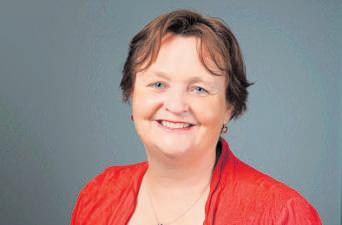
AsInfrastructureNewZealand says,therehasneverbeen amore pressingtimeinthiscountrytofocus onhowwearegoingtobuild,upgrade andmaintaintheinfrastructure neededtoseeusthroughthenext threedecades.
Thisyear, BuildingNations2050 willlooktothethemeofresilienceto design asystemthatcaneffectively deliveronthecommitmentsthe Governmentandthesectorhave made.Thegroupsays:“Wewilllook backfromthevantagepointof2050 whenwewillhavehopefullydelivered onthefirstNewZealand infrastructurestrategy,achievednetzerogreenhousegasemissionsand bereapingthebenefitsof asuiteof structuralreforms.”
Toaddsomecontext:NewZealand currentlyfacesaninfrastructure deficitwhichhasbeenputataround $210billion.Thereissignificantcostescalationforprojectswithinan inflationaryenvironment,andsupply chainissuesremain aproblem.There areestimatesNewZealandwillhave ashortfallof118,500construction workersin2024 —allofwhichadds totheproblemsofestablishinga
sustainablepipelineofinfrastructure projects.
Withinthe Herald’sInfrastructure Report,InfrastructureNewZealand’s policydirectorMichelleMcCormick spellsoutthatourcurrentapproach tofundingandfinancinginfrastructureisnotworking.Shesuggests agreaterpartnershipapproach betweentheGovernmentandthe privatesectorwouldenhance deliverycapabilityandhelptransfer appropriatekeyrisksofdeliverability totheprivatesectoraswellasthe abilitytoimplementmultiple infrastructureprojects simultaneously.
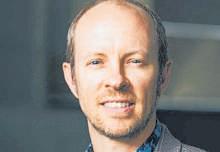

Toillustratethecomplexity,Te Waihanga(theInfrastructure Commission)chiefexecutiveRoss Coplandpointsoutachieving anetzerocarboneconomyisinlargepart aninfrastructureproblem,requiring renewableenergydevelopment equivalenttobuilding aClydeDam everyyearforthenext30.
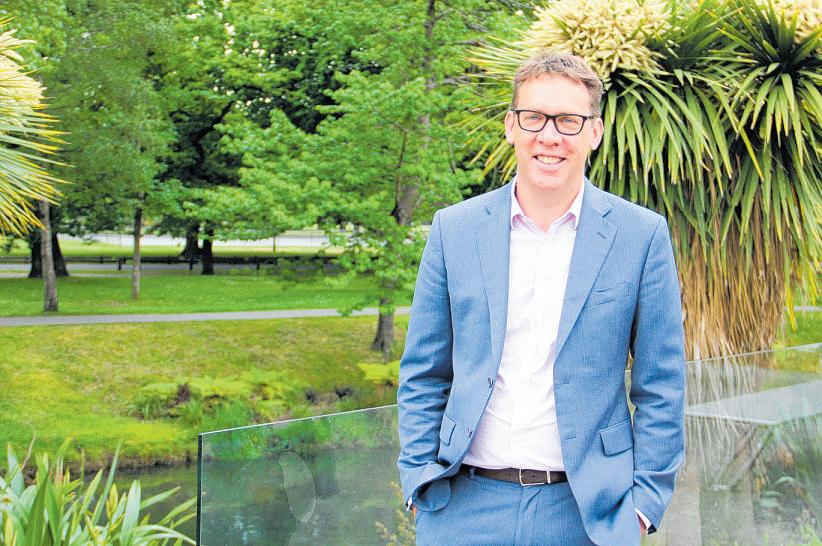
TeWaihangahasreleasedNew Zealand’sfirstlong-term InfrastructureStrategywhichwillbe respondedtowithanactionplanfrom Governmentinthenearterm.
Inthemeantime,renewable

projectsareunderwaysuchas LodestoneEnergy’slarge-scalesolar powerstationwhichisbeingdebt fundedbyWestpac,asReubenTucker outlinestoday.
EngineeringfirmAecomhas developed amethodtoestimatethe carbonimpactininfrastructure projects,andTonkinandTaylor’s JamesHughestellsGrahamSkellern thereneedstobemoreintensive livingincitiestohelpusheadoff climatechangeimpacts.
AddressingNewZealand’s Infrastructurechallengesisnota simplematter,saysGHD’sDavid Norman,whounderlinesthatNew Zealandiscompetingon aworldscale notonlyforlabourbutforthe materialsandeventhemachinery neededtobuildinfrastructure projects.
AucklandLightRail’srecently appointedchiefexecutive,Tommy Parker,spellsoutthecaseforlight railisstrongandit’snot arecent whim.AndAucklandBusiness ChamberCEOSimonBridgescomes upwithfivewaystofixthecity’s transport.

The Herald alsotakes alookat whatishappeninginthevitaldigital


architecturespacewithinterviews withAWS’sTiffanyBloomquistonthe company’smajorinvestmentincloud computingdatacentresinNew ZealandandEntelar’sRajeshSingh overplanstobuild5Gandfibre networkstounderpinnewdigital technologies.
Backto BuildingNations:Akey focusofthisweek’sconferenceisNew Zealand’shugeinfrastructuredeficit. Therehasneverbeen amorepressing timetofocusonhowwearegoing tobuild,upgradeandmaintainthe infrastructureneededtoseeus throughthenextthreedecades.
Additionalareasoffocusinclude climatechangeandsustainable infrastructure,skillsandretention, diversity,therangeofreform programmesunderwayandthe sustainablefundingandfinancingof infrastructure.Centraltodiscussions willbethechallengetocreatea systemresilienttoshocksandableto adapttoandanticipatekeybarriers toachievingoursharedambitions.
Itwillbe acompellingtwodaysfor thesector.
Enjoythereport.
nzherald.co.nz/business
TheHerald’sbusinessreports seriesissupportedbyadvertising sponsorship.TheInfrastructure reportsponsorsinclude:Aecom, AucklandLightRail,AWS,Entelar Group,GHD,ICBCm
InfrastructureNewZealand, TonkinandTaylorandWestpac.
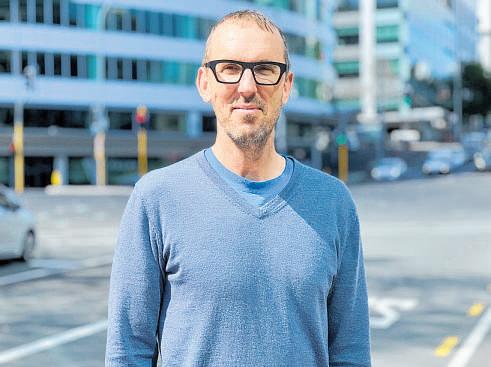
Robertsonhasalsoheldinitial discussionswithAucklandMayor WayneBrowntofind awaythrough pointsofcontentionoversomebig transformationalprojectsaffecting Auckland.
FinanceMinisterGrantRobertsonisadamantthatif acogovernanceroleforMaoriis notfoundintheThree Watersreformsitwould“endupin thecourtsimmediately”.
RobertsonsaystheGovernment willpressaheadwiththecontroversialreformsinthefaceofoppositionfromtheNationalPartyand somemayorssaying,“it’stheright thingtodo”.
Controversyovertheextentofcogovernancehasovershadowedthe meritsofsettingupfournewpubliclyownedWaterServicesEntitiestorun NewZealand’sdrinkingwater, wastewaterandstormwaterservices.
Thesearecurrentlyoperatedby councilsonbehalfofcommunities.
“Ithinkitisnaivetobelieveyou canresolvewaterissuesinNew Zealandwithout aroleforMaori,” saysRobertson.“Agovernmentwho didnotfindplaceandroleforMaori wouldendupinthecourtsimmediately.”
TheGovernment’spositionisthat nobodyownsthewater,hesays.“But clearlywithinMaoridomthereisa streamthatwouldsayotherwise.”
Hecontendsthatlocalgovernment,whichhasbeenopposedto losingownershipcontrolofthe assets,have“almostexclusively”said
thattheyhavegotreallygoodrelationshipswithmanawhenua.
TheGovernmentlastweektookon boardselectcommitteerecommendationstoensure amixofrural, provincial,andmetropolitancouncils willberepresentedontheregional entities.
Theentitieswillalsohaveannual shareholders’meetings,andthere willalsobestrongeraccountability measuresandincreasedauditscrutiny.
Therewillbeconsiderablefocus ontheGovernment’sinfrastructure programmeat BuildingNations2050 whichgetsunderwayinWellington today.
Robertsonistheopeningspeaker andwillbefollowedbyfourother Ministersduringthecourseofthe
two-daysummithostedbyInfrastructureNewZealand.
Politicaldissensionisnotconfined toThreeWaters.
NationalalsoopposestheAucklandlightrailprojectwhichincludes substantialinvestmentforurbanintensificationalongrailcorridors, takingtheoverallpricetagto$29 billion.

“Ithinkeveniftherearearguments aroundtheexactmodeandtheexact route, Idon’tthinkthereis asolution forAucklandtransportthatdoesn’t involve amassrapidtransportcorridorthrough acorridorthatlinksthe WestandtheEast.
“It’s ashort-sightedpoliticaldecision,”hesays. “Onethat Isuspect Nationalmightrevisitweretheyto getintoGovernment.”
Amassivejointinfrastructureprogrammeisalreadyunderway throughtheAucklandTransport Alignmentprogramme(ATAP);a cross-agencypartnershipincluding theMinistryofTransport,Waka KotahiNZTransportAgency, KiwiRail,theTreasury,Auckland Council,AucklandTransportandthe StateServicesCommission.
InMarch2021,theGovernment announced$31.4bwouldbeinvested viaATAPtofundcriticaltransport infrastructure.
RobertsonpointstotheAuckland LightRailprojectandtheworkthe councilandWatercarearealready doingtobuildtheCentralInterceptor.
“Wedoneedtoworktogetheron thatandwhiletheMayorhashad thingstosayaboutAucklandlight rail, Iwouldhopeinthefullcontext ofwhatwearetryingtodoinAucklandthatwillbeimportant.
“Remember,whenweannounced Aucklandlightrailwelinkedittothe secondWaitemata¯crossing.
“Thatisanotherpriorityforme, thataswekeepinvestinginthe Aucklandarea,it’sco-ordinated.
“Thatpieceofworkisreallyimportanttome.”
Asmuchas$14boflocalgovernmentinfrastructureisatriskfromsea levelrise,according aLocalGovernmentNZreport,whichcallsoncentral governmenttourgentlydeveloppoli-
ciestohelpminimisetheimpactof climatechangeonNewZealand’s communities
Robertsonwants anationalconversationoverhowNewZealand adaptsasrecentfloodingeventsand risingsealevelsmakesomeareas marginal.
TheMinistryfortheEnvironment hasreleased aNationalAdaptation Planwith160recommendationsina 200-pagereportthatcovertheenvironment,communities,dwellings, andinfrastructure.
Robertsonsaystherehasbeen goodprogressonemissionreductionsandaroundtheneedforbusinessestomakefinancialdisclosures onhowtheywillbeaffectedby climatechange.
“But Iamnot sure we are in the same place on adaptation as a country. That raises really significant issues on insurance and how we take forward that conversation.”
He says it’s not just up to the Government doing everything but also making information available to people to make good decisions.


“You think about Westport’s situation which is very immediate. You think about South Dunedin’s which is alonger-term thing but the planning for it needs to happen now.
“You think about Taira¯whiti with amassive economic issue associated with adaptation around forestry and ability to move logs when the road has been wiped out twice in ayear.
“Clearly that is ashared responsibility across society.”
● B4:Costescalationsaffect Infrastructureactionplan
AucklandLight Railwillbethecountry’s largest ever infrastructureprojectand isthenextsignificantstepina pipeline ofcity-wide rapidtransit work over the coming20-plus years.
Itwill serveasa foundation forthe future, with atunnelbuiltinthe citynow forthe CityCentretoMāngerelinecreatinga hub enablingfuturelightraillines to theNorth Shoreand North West.The wholecity benefitsandsaves onfutureconstruction
FinanceMinisterGrantRobertsonsaysanactionplanfor buildingNewZealand’svital infrastructurewillbeout shortlywhichwilltakeaccountofthe sector’sstrainedcapacitytodeliver.
Theactionplancomesagainsta backgroundwherehighinflationhas ledtocostescalation,andsupply chainconstraintsandlabourshortagesarehavingtheirimpact.
InMay,TeWaihanga,theInfrastructureCommission,releasedNew Zealand’sfirstlong-termInfrastructureStrategy,whichsetouta principles-basedapproach,objectivesandrecommendationsonhow toaddressthecountry’sestimated $210billionunder-investmentin infrastructure.TheGovernmentrespondedbysupportingthemajority ofthestrategy’srecommendations.
“Whenwerespondedtothestrategywesaidwewantedtohave measurabletimeboundmilestones andtargetsforthat,”Robertsontold the Herald.“Theactionplanis areally importantpartofmakingsurethatwe dodeliveronactualinfrastructure buildsandthatwe’redoingthework weneedtodotomakesurewemake thebestuseoftheinfrastructurewe havegot.”
Wearinghisfinanceportfoliohat, RobertsonisnowassessingBudget bidsfornewcapitalforinfrastructure projects.
“I’macutelyconsciousofthecapacitywithinthesectoratthemoment,”saidRobertson.
“Iamreallylookingforthingsthat areabletobedeliveredandthatwe haveconfidencewehavegotthe capacitytodeliverin.”
“Ithinkwe’reallawareofthose capacityconstraints.We’vegot alot ofstuffunderway.Youarelikelyto seeusindicating adirectionoftravel forsomeareasthatnotnecessarily fullyidentifiedbecauseweneedthe sectortohavesomeconfidencethere isworkdownthepipeline,butalso notpilethatworkinrightnowwhen theyarereallystrugglingwiththeir owncapacityconstraints.”
Aninvestmentpanelassessesbids
We’renodifferent fromany other person building something.We sufferfromthose cost-escalations.
GrantRobertsonagainst“valueformoney”,deliverabilityandtheiralignmentwithGovernment’soverallstrategy.Thatpanel recommendswhichprojectsshould befundedandinwhatorder.
Thereisadditionalcomplexity withincreasingpressureontraditionalfundingsources.
“Probablyoneoftheimportant piecesofstrategicworkisthereview oftheNationalLandTransportFund (NLTF)thatMichaelWoodisleading,” addedRobertson.“Thatfundisthe moneywegethypothecatedoutof fuelexcisebutasthetransportfleet decarbonisesthereis amajor,major strainonthatfund.”
Thefundprovidesabout$4.5ba year,butRobertsonsaiditis“oversubscribed”;therearemoreprojects tofinancethanthefundallows.
ThereisalsotheNewZealand UpgradeProgramme,whereaninvestmentof$8.7bwasheraldedin January2020tofundtransportprojectsinwhatRobertsoncalls“BC” (beforeCovid).
“Allofthemhavebeencaughtup inCovidandthenthecostescalation,” hesaid.“So,weareneedingtodo someworkonphasingandsequencingbutnotnecessarilyjettisoning anyprojects.Justbeingreallyaware weneedtoworkourwaythrough those.
“We’renodifferentfromanyother personbuildingsomething —wesufferfromthosecostescalation.
“Butthatprogrammeisvast.It’sgot amixtureofroadandrail,walking andcycling;wewillseeprojectsout overthenext10yearsanditwillgive asolidpipelineofwork.”
RobertsonsaystheGovernment
haschangedthedebtceiling —“which wearewellunder” —butitislooking athowtofurtherutiliseitsbalance sheettofundprojectsoncecapacity constraintsease.
TheGovernmentintroducedthe InfrastructureFundingandFinance (IFF)Acttoassisthigh-growth councilswithconstrainedbalance sheetsinareaslikeAuckland,Hamilton,TaurangaandQueenstownto accessalternativefundingand financetoolstomeethousingneeds. TheGovernmentworkswithlocal councils,creates aspecialpurpose vehicle(SPV)andbringsinprivate finance.SPVshavebeenusedin Auckland;twoarebeingassessedfor TaurangaandoneforWellington, Robertsonsaysoneofthethree projectsisclosetosignoff,butthe processneedsstreamlining.“It’s brandnewandit’sgoingtoneed sometweakingtoworkwell.The feedback Ihavehad(fromthesector) is:Greatidea,buthowdoweget more?Howdoweallowourselvesto seemoreinnovativeprivate-public fundingarrangements?”

Thereisalso amassivebuildprogrammeunderwaywiththenew Dunedinhospitalrampingupand regionalhospitalbuildsinWhangarei andNelson.

Robertsoncontendsthecreation ofHealthNewZealandwillgivemore focusenabling anationwideframeworkratherthansayconsidering20 separatebuildingprojects.

Overthepastcoupleofyears, thepandemichashada seriousimpactonthecost andtimingsofinfrastructure.
While2022washopedtobethe yeartheworldreturnedtosomekind ofnormality,eventsoverthepast year —includingtheevolutionofthe pandemicandthewarinUkraine— havebroughtwiththemsupplychain constraints,inflation,andongoinguncertainty.Butdespitetheseheadwinds,thereremains asteadfastfocusongrowingthesustainabilityand equityofthesector.
Hereis alookatsomeofthebig topicsthatwillcontinuetoshapethe sectoroverthecomingyears:
Inflationandrisingrisksamid uncertaintimes
Inflationhasbecomethedominating storyfacingtheinfrastructureindustryin2022.
Therapidescalationofthecostof constructionisbeingfeltworldwide andiscreatingmajorchallengesfor projectdelivery.
Thisisbeingexacerbatedby ongoingsupplychainconstraints.Initiallycausedbythepandemic,this hascontinuedas aresultofRussia’s invasionofUkraineandthecontinuedsnaplockdownsinChina.
Initslatestquarterlyreport,the NewZealandInfrastructureCommissionTeWaihanga,cautionsthat ifinflationcontinuestorunhotand supplychainsremainconstrained,it willbechallengingtodeliverinfrastructurerapidlywithoutstretching ourlimitedcapacitytobuild.
Butthoughinflationstatistics suggestdemandisstilloutrunning supply,thereareemergingsignsof aglobaleconomicslowdown.
China’scontinuedpushforzeroCovidandtheintermittentlockdownsthatcomewithit,combined withitsstrugglingrealestatemarket, hasresultedin asharpdropingrowth andtheworld’srelianceonChinawill ensurethatslowdownisfelteverywhere.
LastmonththeInternationalMonetaryFund(IMF)cutitsglobalgrowth forecastfor2023to2.7percentfrom apreviousforecastof2.9percent.In arecentupdate,theIMFsaidrecent high-frequencyindicators“confirm thattheoutlookisgloomier”than projected,particularlyinEurope.
Reducedeconomicactivitywill seeinflationlessen,butwilllikely bringwithitanincreaseinunemploymentandinsolvencyriskforconstructionfirms.
Asrisinginterestratesreducethe abilitytoborrowandseedemandfor
residentialbuildingfallaway,itwill placethebroaderconstructionsector underpressureandshiftthefocus frommanagingcostincreasesand capacitypressurestomanaging workloadandmaintainingfinancial sustainability.
AsTeWaihanganotes,iftheglobal economytipsoverintorecession, fallingdemandfromnon-infrastructureconstructionmayeasethe capacityandskillspressuresseen overthelastyear,andbringwithit anopportunitytodelivermoreinfrastructure.
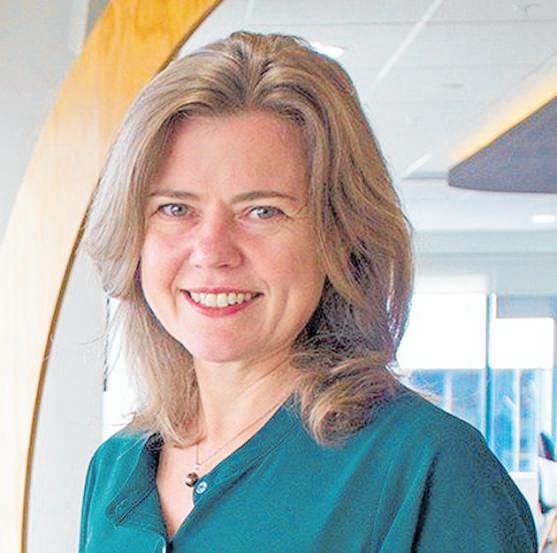
Likeallindustries,increasingdiversityandinclusivenesswillbe anecessitytoaddresschallengestheinfrastructuresectorisfacing.
Therehasbeengoodprogresson thisfrontoverthepastyear. Agrowingnumberofbusinessesinthesectorhaveestablisheddiversitytargets.
ThisyearFletcherBuildingreporteditsinterncohorthad a50:50 splitbetweenmenandwomen,and itsgraduatecohortwas40percent women.
TonkinandTaylorhasfoundpurposefullyandopenlytalkingabout unconsciousbiasatalllevelsofthe organisationhasbeen agreattoolto
createanenvironmentthathaszero tolerancefordiscrimination.
ChiefexecutivePennyKneebone, saysmomentumregardingdiversity andinclusivityhaspickedupacross thesectorinthepastyear,noticeably viathediversityofvoicesinthe sectorsharingtheirthoughts,perspectivesandexperience.
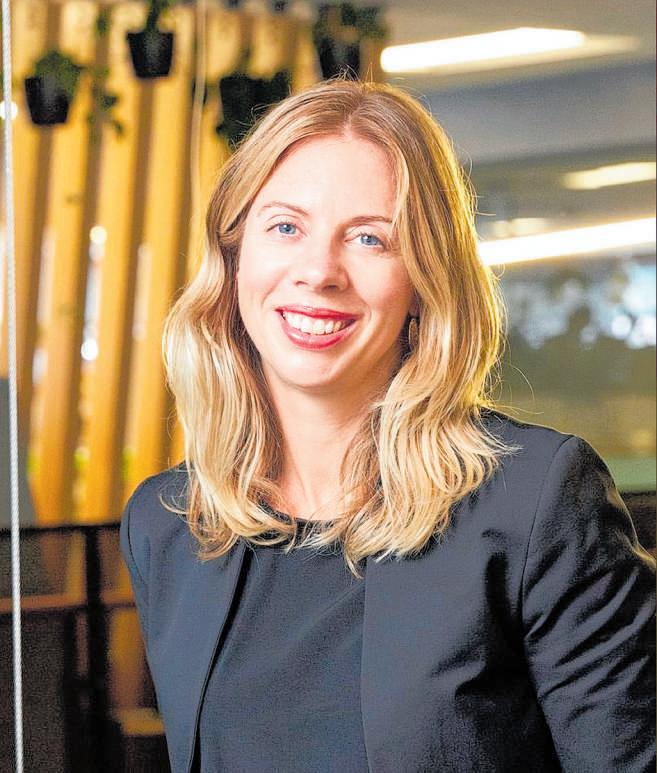
“Thatisgreat,butitisimportant tokeepupthegoodmahiandbuild onthatmomentum,”Kneebone says. She’dliketoseestrongerprogress maderegardingdiversityandinclusionmetricsacrossthesector.
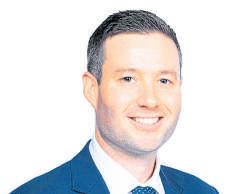

“Wecantalkthetalk,butdiversity andinclusionmetricswillhelpgive theindustryinsightsandindicators onwheretotakeactiontoimprove andensurethatwe’rewalkingthe walk.”

InfrastructureNewZealand,the industry’smemberassociation,has severalinitiativestohelpitsmembers createandsustain adiverseand inclusiveinfrastructuresector.
ThegroupischairedbyMargaret Devlin,electedtothepositionatthe 2021AGM,whohas aparticularfocus onpeople,diversityandculture.
SheisalsochairofAuckland’s WatercareandLytteltonPortanda directorofDairyNZ,HamiltonAirport, ITPartnersGroupandWaimea Water.
Earlierthisyear,InfrastructureNZ established adiversityadvisory boardtohelpaddresskeychallenges facingthesector.
TheWomen’sInfrastructureNetwork,setupin2016toincreasethe numberofwomeninleadershiproles andgrowthevisibilityofwomen, nowhassevenchaptersthroughout thecountryand acombinedmembershipofmorethan2100women.
Tofurtherattractwomentothe sector,managingdirectorofinternationalengineeringconsultancy Aurecon,TraceyRyan,saysthereis nosingleapproachthatwillwork.
“Itmustbe acombinationofleadership,policies/systemsand behaviours,shesays.
“Wealsoneedtogetinfrontof schoolchildrentohelpbreakdown barriersandnormalisethatanyone canhave acareerintheinfrastructureindustry.
“Therearenowmoreseniorfemaleleadersintheindustrywhich hasbeengreatprogress —wearestill asmallgroup,butwe’renotjusta coupleanymore.
“It’sabout‘youcan’tbewhatyou can’tsee’,sothemorewesupport womenintoseniorandleadership rolesthebetter.”
Ryanisherselfalsoco-chairofthe ConstructionSectorAccord.
Sustainableinfrastructuretothe fore
Thebuiltenvironmentisestimatedto beresponsibleforalmost50percent ofallextractedmaterialsandcontributessome40percentofglobal energy-relatedemissions.
Emissionsaremadeupof acombinationoftheenergyusedtoruna buildingday-to-dayaswellas embodiedcarbonemissions—those tiedintotheconstruction,maintenanceandultimatedemolition.
Thefocusofgreenbuildinghas largelybeenonmakingbuildings moreefficienttorun,whichcanoften comeattheexpenseofembodied carbonemissions.Butwiththeglobal transitiontosustainableandnet-zero infrastructureemissionssolutions continuingatpace,attentionisnow turningtotheenvironmentalimpact ofconstruction.
Theheightenedawarenessofthe sector’simpactontheenvironment meansitisbecomingincreasingly unacceptableforcompaniestofailto makeprogressinthisregard.
Bolsteringthispushistheenergy crisisinEurope.Theinvasionof Ukrainehasspurredaneffortfrom Europeancountriestoreducetheuse ofoilandgasintheregionand improvetheenergyefficiencyof infrastructure.
Lastmonth,theInternationalEnergyAgency(IEA)releaseditsannual WorldEnergyOutlookreportand notedthattheinvasionislikelyto acceleratetheworld’stransitionto greenerenergyfromfossilfuels.
“Energymarketsandpolicieshave changedas aresultofRussia’sinvasionofUkraine,notjustforthetime being,butfordecadestocome,”said IEAexecutivedirectorFatihBirol.
“Governmentsaroundtheworld arerespondingtothecrisisbydoublingdownoncleanenergy —inthe US,EU,Japan,China,Indiaandelsewhere.Theirnewpoliciesaresetto helpglobalcleanenergyinvestment riseaboveUS$2trillion ayearby 2030,anincreaseofover50percent fromtoday.”
Infrastructureisnotonlyhighly responsibleforclimatechangeand integraltoitsmitigation,butitisalso highlyexposedtoitseffects.
Ifthecoalitionofnationsistomeet theParisAgreementtodecarbonise theglobaleconomyby2050,current momentumseeningreeninfrastructurelookssettocontinue.
In aworldwherethegeopolitical andeconomicenvironmentlook shaky,cleaninfrastructure willhelp toboostgrowth,createjobsandbuild energysecurityandresilienceagainst theongoingeffectsofclimatechange.
Withtheseissuesbecomingmore frequentacrossourtownsandcities, howready,ornot,arewetoprovide forAotearoa’sfuturegenerations?
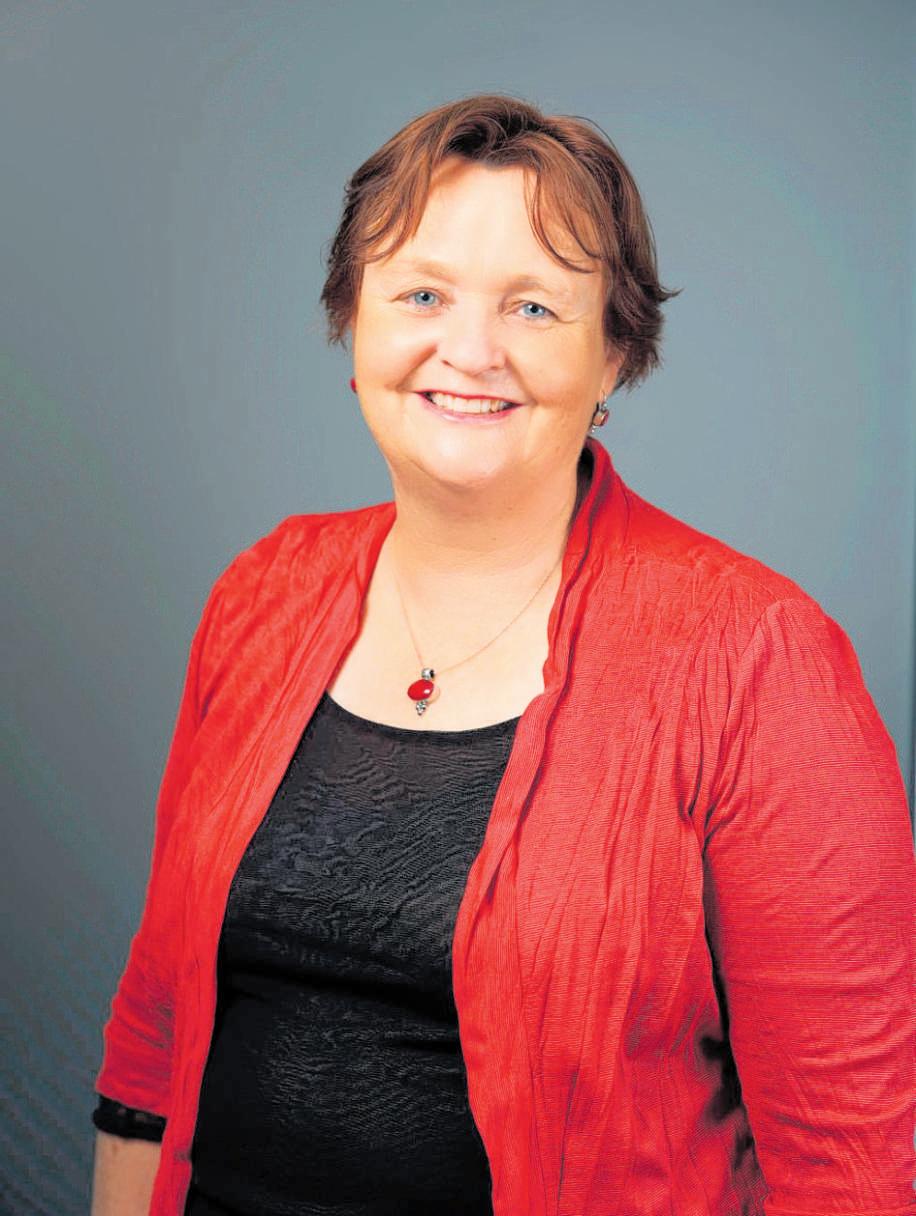
In50years’time,anadditional1.5 millionpeoplewillcallAotearoa home.
ThisisnearlyequivalenttoanotherAuckland.
Wearealsostartingtoexperience thesignificantimpactofclimate change —affectingcommunitiesright acrossthecountrythroughsevere stormevents,flooding,risingsea levelsanddroughts.
Decadesofunderinvestmentin infrastructurehaveleftuswitha significantinfrastructuredeficit— around$210billion.
Howwillwecopewiththeseextra peopleandthepressuresthatclimate changewillputonourinfrastructure?
Fundamentally,ourcurrentapproachtofundingandfinancinginfrastructureisnotworking.Today,we arespendingaround5.5percentof NewZealand’sGDPonbuildingpublic infrastructure.
Tomeettheidentifiedinfrastructuredeficit,thiswouldneedto increasetonearly10percentofGDP or$31bannually.So,whatisholding usback?
Whenwedoinvest,toooftenour criticalinfrastructureprojects,or largeprogrammesofwork,areidentifiedwithout arobustfundingplan. It’shardtoargueaboutthestrong needforinfrastructure,butwhopays isoftenleftunansweredwhile aquest formoregovernmentfundingfrom oneofthemanycapitalfundsis explored.
Councilsthemselvesarealsooften strugglingwithdebtceilingsand unaffordablerates.
Theverynatureofsomeinfrastructurechallengesalsorelatesto politicalideology.
Transformationalinfrastructure suchasAucklandlightrailorthenew masstransitsystemproposedfor Wellington,runtheriskofhavingthe fundingarterycutduetothelackof bipartisansupport.Shortterminvestmentdecisionstiedtopoliticalterms donothingforNewZealanders.They impactontheinternationalcredibilityofourindustryaswellaspublic confidence.
Alackof asustainableandcertain pipelineofinfrastructureprojectsis alsostoppingourconstructionand developmentsectorfromgrowing. Withoutthispipeline,thesectoris unabletogearupthenecessarytalent,capacityandequipmenttodelivertheinfrastructurethiscountry sodesperatelyneeds.
Weneedtobetterconsider innovativesolutions and approaches toensure asustainablepipeline.This sustainedinfrastructureinvestment isvitaltoimproveourqualityoflife andallowustoremaininter-
nationallycompetitiveasa country. Wemustensurewearegettingthe mostfromourexistinginfrastructure, andfuture-proofwithresilience,our newprojects.
Wehavemadesomeprogresswith TeWaihanga/TheNewZealandInfrastructureCommissionplayinganimportantco-ordinationrolein establishingandpublishingourfirst
MichelleMcCormicknationalinfrastructurepipeline.But thisisjustthestart,andwehavea longroadaheadofus.
Wehavethetools,sowhyaren’t weusingthem?
Partofaddressingthisproblemis aboutfinallyusingthebroadrange offundingandfinancingtoolsavailablenow.
Legislationcollectingdust
InAugust2020twopiecesoflegislationwerepassed,theInfrastructure FundingandFinancing(IFF)Actand theUrbanDevelopmentAct.Ithas nowbeenovertwoyears,andwhat istheretoshowforit?
TheInfrastructureFundingand FinancingActsetsoutpathwaysfor localauthoritiestofinanceinfrastructureprojectsin awaythatdoes notimpactcouncilbalancesheets.It allowsdebtfinancetoberaisedfrom theprivatesectorandring-fenced from acouncil’sbalancesheet.
TheActpassedwithsupportfrom allpoliticalpartiesinparliamentat thetime.
WhenaskedinAprilthisyear,Dr MeganWoods,theMinisterresponsibleforthelegislationstatedthat “Infrastructureprojectsarecomplex andrequiresignificantupfrontwork priortoIFFFinancebeingcommitted”.Sheexplainedthat“thisupfront workincludesthingslikeplanning, design,consentingandlandacquisitionwhichcantakebetween12-24 monthstocomplete,sothisdoestake sometime.”
Woodswentontosaythatshewas expectingthreeproposalsthisyear fromWellingtonandTauranga.
However,asweshifttowardsthe endoftheyear,therehasonlybeen oneproposaltouse alevysubmitted. Othersarestillinthedevelopment phase,ortheapproachhasbeen parked.
EventheInfrastructureCommission’sstrategyrecommendedthat centralgovernmentneedstoinvestigateopportunitiestoutilisethe InfrastructureFundingandFinancing Act2020andexploreotherSpecial PurposeVehiclesas amechanismfor newinfrastructureinvestments.
Itisnowmorethantwoyearssince thelegislationpassed,willweever seethisactbeingused?Whatisthe barriertoutilisingthisinnovative pieceoflegislation?
Isitthecomplexityofthelegislationorriskaversiontobeingthefirst starter?Isitjusteasiertokeep trackingalongwithinourexisting fundingconstraintsandcontinuingto expect amagicpotofgoldfrom centralgovernmentinsteadofbeing mastersofourowndestiny?
Privatecapitalwaitinginthe wings
As acountry,wealsosteerawayfrom theuseofprivatecapital,underutilisingtheprivatesector’sskillsand capacitytodeliverinfrastructure.
Agreaterpartnershipapproach
betweentheGovernmentandthe privatesectorwouldenhancedeliverycapabilityandhelptransfer appropriatekeyrisksofdeliverability totheprivatesectoraswellasthe abilitytoimplementmultipleinfrastructureprojectssimultaneously.
NewZealandrunstherealriskof beingleftbehind.

Othercountriesalreadymakeit easiertoinvestandhavemorecertaintyintheirplanningsystemwhich allows aflowofexpertiseneededfor thecomplexinfrastructureprojects ourmodernsocietiesrequiretofunction.
AnoverridingfearinAotearoa, thatthegovernment(andyouandI astaxpayers)willberippedoffbythe superprofit-makingmultinationals canbeaddressedbyemployinginternationalbestpracticeoftransparentlyagreeinginvestmentreturn upfront.
Butagain,whatisstoppingus? Whatisholdingusbackas acountry fromleveragingthiscapital? Ourriskaversion iscostingusas country Notcommitting,andnottakingsome risk,isnotsavingusmoney.The infrastructureprojectswedesper-
atelyneedtosupportourcommunitiesarenevergoingtobeany cheaper.Bydelaying,societyis alreadypaying asubstantialcost everyyearwithnothingtoshowfor it.
AsoutlinedinInfrastructureNew Zealand’srecentlyreleasedreport GreatDecisionsaretimely,thereisa quantifiablecostofdelay.Asa country,wearenotsavingmoneyby beingcautious,andconstantlydelayingandreworkingbusinesscases.
Thereportfoundthatdelaystothe WaikatoExpresswayhaveledtoa minimumforgonebenefitoverseven
yearsofapproximately$2.3bor $334mperyear.Toputintocontext, thatfigureisalmostequaltothetotal ClimateEmergencyResponseFund fortransport,energyandindustryin the2022budget.Theforgonebenefits ofearliercompletionwouldhave been1.2timesthetotalcapitalcost oftheprojectwhichwas$1.9b. Simplyput,ourdecision-makingis costingusgreaterinfrastructureinvestment.
Astepchangeisneeded Nowisthetimetotrulybeboldand trynewthings.Weknowourapproachinthepasthasnotworked,
NewZealand’sleadinginfrastructureconference whereinfluentialdecisionmakersgatherannually fora freshshotofmotivationandinspiration.
andweneedtodothingsdifferently. Partofthisisdrivinginnovation anddiversityofthought.Wehave newfundingandfinancingtools,and weknowthereareopportunitieswith privatecapital,solet’sstartmaking progressandsetAotearoaonthepath to amuchbrighter2050.
● MichelleMcCormickisPolicy DirectoratInfrastructureNewZealand InfrastructureNewZealandisan advertisingsponsoroftheHerald’s Infrastructurereport
We need new tools tobetterusewhat wehavealready, writes ChrisBishop
Infrastructureisthebeating heartofeverymodern,vibrant economy.Wealldependonit forourstandardofliving.Fora youngcountrylikeNewZealand,far awayfromworldmarkets,itiseven moreimportant.
Butfor agenerationormore,New Zealandhasunderinvested ininfrastructure,andtheresultsareinplain sight:congestionchokesourcities, criticalprojectsspendyearsbogged downinthetightgripoflabyrinthine planningprocesses,andonanisland in acountrythesizeoftheUK occupiedby alittleoverfivemillion people,wehavemanagedtocreate oneoftheworld’smostunaffordable housingmarkets.
Withthenextelectionarounda yearaway, Iwanttobeclearthat infrastructureinvestmentwillbeat theheartofthenextNational-led government.Ifwehavetheprivilege ofbeingelectedtotheTreasury benches,Nationalwillfocusonfive areastodrive astepchangeinthe wayinfrastructureisplanned,funded anddelivered.
First,itisimperativewedo amuch betterjobofutilisingourexisting infrastructure.Wesimplycan’tbuild ourwayoutoftheinfrastructure deficitwehavecreated.OnoneestimatebytheInfrastructureCommission,closingourassetandrenewaldeficitswouldrequire anear
doublingofinfrastructureinvestment as ashareoftheeconomy.That meansweneednewtoolstobetter usewhatwehavealready.
National’sviewisthatthetimehas comeforcongestionpricinginour majorcities(startingwithAuckland). Thepolicyhasbeenextensively studiedbothhereandoverseasfor decades(NZIER’sfirstreportonthe subjectwasin1993!)andweknow thatitworks.
Themostrecentstudyshowed thatcongestionpricingisexpectedto reducecongestionatpeaktimesby 8to12percent —equivalenttoschool holidaytrafficcongestioninAuckland,permanently.
Therearecleareconomic,social andenvironmentalbenefitsfroma well-designedrevenueneutralcongestionpricingschemeandthereis politicalconsensusacrosstheParlia-
ment —solet’sgetonwithit.
Second,tohelpclosethedeficit, Nationalwillworktosignificantly boostinfrastructureinvestment, whichwillinevitablyinvolvebroader fundingtoolsthanwehavenow.
Weneed amorematureapproach toprivatesectorinvestmentininfrastructure.Ourviewisthatwearetoo capital-starvedas acountrytosimply rejectprivateinvestmentonideologicalgrounds.Itisnoteworthythat existingprivately-ownedinfrastructure(telecommunicationsand energy,forexample)generallyperformwell.
Nationalisalsoconsideringthe waycentralgovernmentfundsmajor transportprojectsthroughthe NationalLandTransportFund (NLTF).Payingfornewroadsoutof cashfromtheNLTFislikebuyinga newhousewithcashratherthan
Wearetoo capitalstarvedasa countryto simplyreject private investment on ideological grounds.
ChrisBishopNationalisscepticaltheGovernment’sRMAchangeswillmakeit easiertogetthingsdone.SeniorRMA practitionershavetoldusitwilllikely beworsethanthestatusquo.The 900-pageRMAwouldbereplacedby around800pages.Thereareyet morelayersofbureaucracybeing proposed.Therewillbemorelegal uncertainty,particularlywhenthe newpurposeoftheActwillbeto recogniseanduphold“teOranga ote Taiao”, alegaltermthatiscompletely new.Itdoesnotappearinourstatute books.Yearsoflegalwrangling awaits.I’msurelawyerswillenjoyit.
Fourth,itiscriticalwedevelopa long-terminfrastructurepipelineand plan,forallthereasonsthatregularly getraisedwithmebythesector— confidencetoinvestintechnology, equipment,andpeople,andefficienciesinplanningandprocurement.
takingon amortgageandpayingit offovertime.Itdoesn’tmake alot ofsense,andweareopentoan approachwhichmeanstheTransport Agencycanprovidemuchmorecertaintytousersandlocalgovernment overinvestmentinmajorcorridors. Wearealsoenthusiasticaboutthe transitiontomoremodernroad pricing,whereallvehiclesusingthe roadarechargedbykilometretravelledratherthanusingfuelconsumptionas aproxyforusage.
Third,weneed arevolutioninthe wayinwhichwedeliverinfrastructureprojects.Asisnowwidely acknowledged,ourNewZealand’s consentingframeworkisbroken.Our infrastructuredevelopersspend$1.29 billionannuallytoconsenttheirprojectsandthetimeittakestoget consenthasincreasedby150percent over afive-yearperiod.
Politicstoooftengetsintheway ofproperplanningandwearecognisantknowthatthechangingofpoliticalprioritiesisproblematic.New Zealandneeds apipelineofwork largelydivorcedfrompoliticsand thatwillbeourNational’spriority.
Finally,thedebacleovertheThree WatersReform,wheretheGovernmenthasmanagedtoinsultand essentiallysidelinelocalgovernment, demonstratesthat arethinkis requiredonthelocalandcentral governmentrelationship
WeintendthatNationalwillpartnerwithcitiesandregionstosupport theirdevelopmentandweareinterestedinthe“CityDeal”concepts pursuedsuccessfullyacrosstheTasmanandfurtherafield.
● ChrisBishopistheNationalParty SpokespersonforInfrastructure& Housing
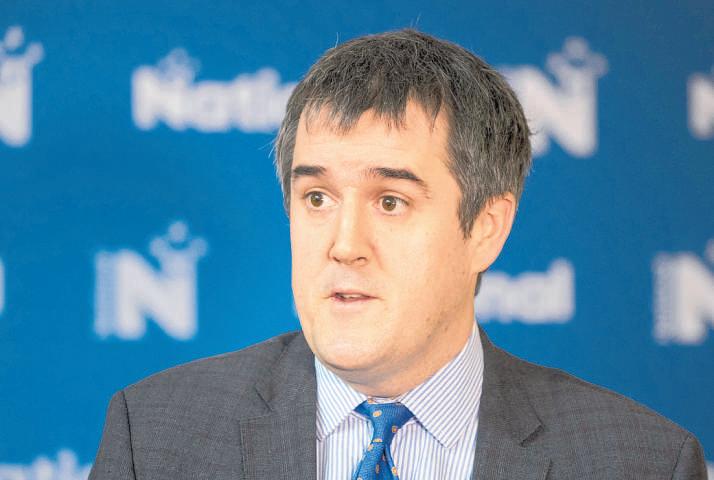
Togetherwithourclientsandpartners,wehaveonegoal–toleaveapositive,lastingimpactonpeopleandourplanet.
Ourinfrastructure challengesrequire sustainedeffort from centraland localgovernment andtheprivate sectorwrites RossCopland
Ourwayoflifereliesonour infrastructure.Itisthe roadsweusetogettowork ormovegoodstomarket, thepowerconnectionsthatheatour homes,theschoolswhereourchildrenlearn,thehospitalsthathealus.
Itis asystem,supportingalmost everythingwedo.
It’salsofacingsomeconsiderable challenges.LikemanyotherOECD countries,NewZealandhasunderinvestedininfrastructureinthepast. Inmanycasesthishasmeantlower servicequalityandresultedin existinginfrastructureunderpressure.Changingweatherpatternsand risingsealevelstestsourresilience —nearly$8billionworthoflocal governmentinfrastructureisestimatedtobeatriskfrom1.5metresof sea-levelrise.
Achieving anet-zerocarboneconomyisinlargepartaninfrastructure problemandrequiresrenewableenergydevelopmentequivalentto building aClydeDameveryyearfor thenext30.Andweneedmore infrastructuretoenablehousingso thatourchildrenarenotpricedout ofourcities.
Whilethesearebigissues,theyare notinsurmountable.Butovercoming themwillrequiresustainedeffort fromcentralandlocalgovernment andtheprivatesector.
InMay,TeWaihanga,theInfrastructureCommission,releasedNew Zealand’sfirstlong-termInfrastructureStrategy,whichsetsouta principles-basedapproach,objectivesandrecommendationsforhow wecanaddresstheseandother issues.InSeptember,theGovernment respondedtothestrategy,supporting themajorityofitsrecommendations.
So,whathappensnow?Initsresponse,theGovernmentidentified thatinmanyareasthereiswork alreadyunderway,aswellasothers whereactionisneeded.Laterthis year,theMinisterofInfrastructure willreleaseanactionplanwithfurtherdetailsonstepstheGovernment istakingtomakethestrategy areality. ButthisisourInfrastructureStrategy, andwhilegovernmentneedstodo itspart,everyoneinthesectorhas arolenowinmakingit arealityand overcomingthechallenges.
Weneedtobuildsmarter —highqualityinvestmentiscritical,andwe needtomakesureweunderstandthe costsandbenefitsofnewinvestmentssothatweareinvestinginthe mosteffectiveinfrastructure solutions.TeWaihangaisworking withotheragenciestoexplorethe potentialforNewZealandtoadopt aninfrastructureprioritylist, atool thathasprovenusefulinAustraliato buildanenduringconsensusonthe infrastructureproblemsandprojects thatshouldbeprioritised.

Thoseinvolvedinprovidinginfrastructurewillneedtoensurethey haveconsideredalloptions,includingnon-builtoptionsratherthan simplybuildingsomethingnew. Pricingtoolslikecongestioncharging canencourageKiwistousepublic transportandtraveloff-peak,and volumetricchargingforwatercan drivegreaterwaterconservation helpingdeferverycostlyupgradesto ourdrinkingwaterandwastewater networks.Indexinginfrastructure chargesandpricestoinflationmight
aboutprioritising housingand infrastructureascore objectives,concerns abouturbanandnatural characterwillcontinue toprevailoverbuilding thehomesNew Zealandersdesperately need.
RossCopland
notbepopular;butitisessentialto startturningthetideonfunding constraintswhichworseneveryyear aswecontinuetochargelessthan thetruecostofdeliveringtheservice.
Weknowthatourinfrastructure systemdoesnotworkforeveryone equally.
TeWaihangaisundertakingsignificantworkintotheequityofour existingsystem,thatwilladdress vexingquestionslikewhofundscapitalandoperatingcostswhenweare buildingforpopulationgrowthorto improvelevelsofservice,andwho benefitsfromit.Wearealsolooking athowCrowninfrastructure providersengagewithiwi/Ma¯ori,a steptowardstrengtheningpartnershipswithandopportunitiesforiwi/
Ma¯oriintheinfrastructuresector.
Wecanliftourabilitytolead complexanddifficultprojectsasthe numberandcomplexityoftheseis expectedtoincrease.TeWaihangais alsoworkingwiththePublicService Commissiontoinvestigate amajor projectsleadershipacademy,which wouldgrowtheskillsofleaders directingourlargestandmostcomplexprojects.
Businesseswillneedtoplanforthe longtermwhenitcomestotheir workforceneeds.
Tohelpwiththis,welaunchedthe NationalInfrastructurePipelinein 2020,whichprovides aforwardview ofplannedinfrastructureprojectsin NewZealandinanonlineformat.We arenowworkingtostrengthenthe NationalInfrastructurePipelineto improvecompleteness andtransparencyofprojectinformationandprovideinsightstoinformdecisionson thedemandandsupplyofnewinfrastructureintothefuture.
We’vealsoworkedtoshine alight onissuesthatcansupportgoodplanninganddecision-making,whichincludedinvestigationintothelinks betweeninfrastructureandhousing affordability.
Thisshowedthatunlesstheplanningsystemisveryspecificabout prioritisinghousingandinfrastructureascoreobjectives,concerns abouturbanandnaturalcharacter willcontinuetoprevailoverbuilding thehomesNewZealandersdesperatelyneed.
Governmentpolicymakerscan leadthewaybyreflectingtheInfrastructureStrategyobjectivesand principlesintheirpolicyworkand programmes.
Agoodexampleofthisisthework underwaytoreformtheResource Managementsystem.Since2014,the relativecostsofconsentinginfrastructurehaveincreasedby70per cent.Whiletheaveragetimetakenfor aninfrastructureprojectconsent morethandoubledinrecentyears.
“Achieving anetzerocarbon economyisinlarge partan infrastructure problemand requiresrenewable energy development equivalentto building aClyde Dameveryyearfor thenext30.”
TeWaihangawillbelookingclosely attheNaturalandBuiltEnvironment andtheSpatialPlanningBillsandbe puttingtogether asubmissionforthe selectcommitteeprocess.
Wealsohave aroleindeveloping thenewNationalPlanningFrameworkthatisenabledbytheseBillsand areworkinghardtostandardiseour understanding and managementof theeffectsofbuildingandoperating infrastructureto improvecertainty andreducecostsinthefuturesystem. It’scriticalthatournewsystemisup tothechallenge,improvingenvironmentaloutcomeswhilereducingthe timeandcostfortheinfrastructure weurgentlyneedtoreduceour emissionsandaddresspressing issueslikehousingaffordability.New Zealand’splanshavegenerallygiven toolittleconsiderationtothecritical naturalresourcesthatunderpinour constructionindustry —materialslike sand,gravelandrock.Thishasmade itveryslowandcostlytogain consentsneededtooperatequarries, alessexcitingbutessentialpartof buildingeveryhouse,roadand cyclewayinthecountry.
TeWaihangahaspartneredwith GNSSciencetomapNewZealand’s rockresourcesandfurtherworkis nowunderwaytopreparemore detaileddatainreadinessforinclusioninfuturespatialplansacross ourgrowthregions.
Thereis acommonthemetothese actions.Wecannolongerdisregard thedramaticeconomic,socialand environmentalcostsoffailingtoplan forourfuture.
Infrastructurewilloutlivetheindividualsbuildingittoday —weneed tomakegooddecisionsforthepresentwithaneyeonourchildren ensuringwebuild aNewZealandthat hasanevenbetterqualityoflifethan weenjoytoday.
● RossCoplandisChiefExecutiveof TeWaihanga,theNewZealand InfrastructureCommission

InSeptemberSparkcombined threebusinessunitstoformthe EntelarGroup, anew,whollyowned,butarm’slength,service deliverycompanythatwillbuildthe criticalinfrastructureincluding5G andfibrenetworksthatunderpins newdigitaltechnologies.
TheunitincludestheoldEntelar companyalongwithConnect8and partsofSpark.
EntelarCEORajeshSinghsays whilethecomponentbusinesses have ahistorystretchingbackyears throughvariousacquisitions,joint venturesandrationalisations,the pathtoEntelar’smodernformstarted about ayearago.

ThatwaswhenSparkbegan movestoestablish aseparatemobile towerbusiness.
InJulyofthisyearthatprocess culminatedwithSparkannouncing thesaleof70percentofitsTowerCo mobiletowersbusinesstoOntario Teachers’PensionPlanBoardfor $900million.Someofthemoney raisedwillbereturnedtoshareholders.
Sparkplanstoinvesttheremainderasitcontinuestomoveaway fromtraditionaltelecommunications towardshighergrowthdigital services.
“Aswelookedatseparatingour towerassetsoutofSpark,weunderstoodweneeded amechanismto providesupportservicesbacktothe TowerCo,”saysSingh.
“TowerCowasenvisagedasa smaller,leanerorganisation.Itwas nevermeanttohaveitsownfield crew.Ourinitialideawastoforma ServeCotosupportTowerCo.
“Thenwerealisedthatbydoing thatwegettorecreate asmallsubset ofwhatwearealreadydoingandthat didn’tmakesense.
“Atthispointwethoughtabout bringingallthesebusinessestogether andaskedourselveswhatanend-toendITservices,infrastructure,build anddeliverycompanymightlook like.So,webroughtinConnect8and allthefieldserviceteamsoutof Spark.
“Thisincludesthemobiledesign teamsandtheradiofrequency engineers.

“Wethencreatedanend-to-end infrastructurecompanythatallows ustodesign,build,supportandmaintaineverythingwhetheritisfibre networks,mobilenetworksorIT infrastructure.”
Sparkis amajorcustomerand owns100percentofthebusiness,yet there’ssufficientseparationforitto beabletoserviceothertelecommunicationscompanieswithoutrunningintoconflicts.
Italreadydoesthis,butsoonthere willbegreaterseparation.
Singh’steamispreparingtomove tonewheadquartersawayfrom SparkCityonAuckland’sVictoriaSt. Fornow,Sparkemployeesarenot allowedtoenterthenewcompany’s spaceintheexistingbuilding.
Newbrandingisinthepipeline.
EntelarGrouphasitsleadership teamincludingfinance,legalandHR.
Singhsaystherearethreeboard memberstogoverntheoperation,but theydon’tgetaccesstorevenuelines ortoknowwhatissoldtocustomers: “Justthetoplinenumbers”.
ThepreviousEntelarbusiness alreadyhad ahighdegreeofseparationfromSpark.
Itwas,andremains, adistributor of arangeofproductsandservices fromcompanieslikeCiscoandNokia supplyingSparkanditscompetitors. Thatearlierbusinessneededindependencetogiveitscustomersa senseofcomfort.
Whilehecan’tnametheother companiesEntelarworkswithyet,he says.
“Wealreadydosomemobile buildswithothermobileoperators”.
Singhsaysthechallengehefaces atthisstageisgettingbusinessesto understandthatEntelarisindepend-
entandthatitoffers auniquesetof skillsinoneplace.
“Thereisn’tanyoneelseinNew Zealandthatcanprovidethebreadth ofservicesandthenyoucanoverlay thisexpertisewith acertifieddistributionlayer.
“Wecangointobuildandmaintain fibreandmobilenetworks.Infact therearefewcompaniesanywhere intheworldwhocandothis.”
Singhsaysthefocusofhiscustomersatthemomentisondelivering 5Gmobilenetworks.
Sparkrecentlysaiditisontrack tohave90percentofthepopulation coveredbyitsown5Gnetworkby theendofnextyear.Theothermobile companiesarepushingashardto extendcoverage.
“EachoftheMNOs(mobilenetworkoperators)hasselectedtheir preferredvendorsandisscalingup todeliver5G,”saysSingh.
“Thereis afinitepoolofresources inNewZealandfordoingthatanda limitednumberofvendorpartners. Wehavebroughtinnewresources fromoffshoretohelpandwecontinuetoinvestinbringingonnew localtalent.
“SparkusesSamsungandNokia technology;VodafoneusesNokia and2degreesiswithEricsson.Each hasitsownrequirementsintermsof skillsandtraining.
“Wemakesureourteamsare adequatelytrainedforthedifferent typesofinfrastructure.Riggersclimb towersandinstallradiomasts.
“There’salso acivilengineering component.
“Ifyou’rebuilding anewtower, thenyouneedtolayfoundationsand constructthetower.”
NewZealandissettoget alotmore towersincomingyears.Sparkhas committedtobuildingatleast670 newtowersinthenextdecade,the othermobilecarriershavesimilar plans.
Whennewmillimetrewave5G frequenciesbecomeavailable,the carrierswillneeddensertowernetworkstoincreasedatacapacity.
companythatallowsus todesign,build,support andmaintaineverything whetheritisfibre networks,mobile networksorIT infrastructure.
RajeshSingh
Beinganend-to-endinfrastructure servicedeliverybusinessmeans everything —fromtheinitialplanning of anewtowersite,todesigningthe project,procuringthesite,digging holes,standingupthetowerand havingthetechnicalexpertisetoinstallthehardware.Itthenmeansboth proactiveandpreventativemaintenance.
Findingtalentischallengingforall NewZealandtechnologybusinesses. There’s aworldwidedemandfor theseskillsandrecentrestrictions duringthepandemicmakematters worse.
ThemovetocombineSpark’sservicedeliveryoperationsrelieves someofthepressureasthelarger organisationcanuseresourcesmore efficiently.
Thecomponentcompanieswere alreadyrecruitingoverseasworkers andthatwillcontinue.
Singhsays atrancheofpeople comingfromoverseasarebeinginterviewednowandshouldarrive hereearlyintheNewYear.
Awayfrom5G,Entelar’sother majorinfrastructureworkprogrammeisbuildingoutmorefibre.
Sparkoperatesitsonefibrenetworksthatarequitedistinctfrom Chorus’residentialUFBfibre.
Aweboffibrecriss-crossesthe countryconnectingcities,townsand keylocations.
Thereisalsothefibrethatrunsto mobiletowerscarryingtrafficbackto centralexchanges.
Workonthesenetworkslargely happensoutofpublicsightandis continuous.
theHerald'sInfrastructurereport
Off the backofthe pandemic, increaseddemand forcloud computinghas promptedAWS to make abig investmenthere, writes BillBennett
Overthenext15yearsAmazonWebServicesplansto spend$7.5billionbuilding cloudcomputingdata centresinNewZealand.
Theinvestmentwillcreate alocal AWSRegionthat’sduetoopenfor businessin2024.Itmeanscustomers whomuststoredatalocallywillbe abletorunthesametasksavailable toAWScustomerselsewhere.
TiffanyBloomquist,AWSNewZealandcountrymanagerforthemcommercialsector,saysthelarge-scale technologyinfrastructureinvestmentwillcreate1000jobsandcontribute$10.8billiontolocalGDPover thatperiod.TheNewZealandAWS regionwillbeoneof25regionsthe companyoperatesaroundtheworld —thereare,atthetimeofwriting,81 availabilityzones.

“AnAWSregionis aphysicallocationwhereweclustermultipledata centres,”explainsBloomquist.
“Wecalleachgroupofthesedata centresanavailabilityzoneandeach regioncontains aminimumofthree isolatedandphysicallyseparated availabilityzones.They’llbeplaced aroundAuckland.
“Eachavailabilityzonehasitsown independentpowerandcooling.The zonesareconnectedby aredundant, ultra-lowlatency(thetimedatatakes totravelbetweenlocationsandback again)network.Therearethehighest levelsofphysicalsecurity,complianceanddataprotection.”
Therearefourconsiderations AWSmakeswhendesigningavailabilityzones.
Topofthelististheenvironment. Thecompanysaysitgoestogreat painstoinvestinlocationsthatare sustainable.Bloomquistsaysthat meansthinkingaboutenvironmental threats,suchfloods,extreme weather eventsand,inthecaseofNewZealand,earthquakes.
Anotherfactoristhewaythedata centresarepowered.AWS’goalfor itsAucklanddatacentreistouse100 percentrenewableenergy.Says Bloomquist:“NewZealandhasbeen investingsignificantlyonthatfront whichmakesitanideallocationfor us”.
Thesecondkeyconsiderationis aroundphysicalsecurity.Itdepends onthelocation,butitcanmean makingsurethereareanappropriate numberofsecurityguards,thatthere aretherightkindoffences,video camerasandintruderdetection.
“Physicalsecurityisabsolutelyour responsibilityandit’ssomethingwe takeveryseriously.
AWS’sthirdconsiderationisthe actualphysicalinfrastructure:the building,theequipmentinsideand theancillaryequipmentthatkeepsit running.Thisincludescooling —data centrescangenerate alotofheat— andfireprotectionsystems.
Thefourthconsiderationisaround thedata.That’swhereAWShasto shareaccountabilitywithitscustomers.
Itcankeepitssideofthedealby restrictingaccess,maintainingclear separationsandbyusingthreatdetectionandsecuritytools.Butits responsibilitycanonlygosofar.
Bloomquistsayswhenthecompanybuilds abusinesscasebefore making asignificantinvestment,it worksbackwardsfromwhatitscustomersneed:“Welistentowhatthey askfor.Ourprimaryfocusistounderstandwhattheirkeyusercasesare. Thenwecanlookattheinvestment weneedtomaketoensurewe addressthatcustomerdemand.”
ForAWS’sNewZealandcustomers,whoaremainlyAucklandbased, akeydemandisforlower latency.
AWShasNewZealandcustomers thatalreadyuseitsSydney,SingaporeorevenUSdatacentres.Ittakes timefordatatotraveltothoselocationsandcomebackagain.
Thisisn’tvitalforeveryapplication,buttherearetaskswherelow latencyisessential,keepingeverythinginAucklandmeanslatencyis extremelylow.
AnotherNewZealandcustomer demandisfordatasovereignty,that’s necessarywhenrulesorregulations requiredatatobekeptin-country.
AWSis20yearsoldandNew Zealandcompanieshaveusedcloud formuchofthattime.
Sowhyisthecompanyinvesting herenow?BloomquistsaystheCovid pandemicacceleratedcompanies thinkingaroundhowtoscalebusinessesandmanagecostsbetter.They strugglewithrisinginflationandthe scarcityorexpenseoftalent.Allthese pressurescombinetopushcom-
paniestousemorecloudcomputing. Shesaysthelocalcloudspendingis expectedtorise22percentthisyear.
AlthoughNewZealandcompanies haveusedcloudcomputingforas longastheiroverseascounterparts, theyhavebeenslowerthanthosein othercountriestoadoptthemore advancedservicescloudtechnology offers.
Bloomquistsays,“wewantcustomerstostartthinkingaboutthe possibilitieswhenthecloudisused withartificialintelligence,machine learning,advanceddataanalytics andeven5Gtechnology.Theseare areaswhereweseecloudreally differentiating.Thisiswhythework we’vedonewithSparkissoexciting.
Earlierthisyear,Sparkworked withAWSontwoproof-of-concept projectsforstandalone5G.While mobilephonenetworkshave upgradedto5Gtechnology,the carriershaveyettoseeallthebenefits oftheupgradebecausemanyoftheir backgroundsystemsstillrunonolder systemsandrelyon4Ginfrastructure.AWSjoinedSpark,Mavenir andNokiatoshowwherethetechnologycango.
Bloomquistseesthepotentialfor virtualandaugmentedrealityalong withreal-timevideoanalytics.“We wantedtoreducelatency,Sparkhas saidthatinsomecasestheyhave reducedlatencybyupto70percent”.
Anotherpossibilitycloudoffersis for,say, amanufacturertobuilda
digitaltwinofanentiremanufacturingline.“You’dbeabletoseeallthe physicalsystemsrepresentedvirtuallyandcustomerswouldbeableto goinandtroubleshootproblems withouttouchinganything.”
Gettingadvancedprojectsoffthe groundrequires apipelineofskilled talent.
BloomquistandAWSareinthe processofdevelopingtheHa¯pori Wahineprogrammewhichis afourweek,community-basedprogramme forKiwiwomenlookingforthekind ofcloudskillscareersthatareindemand.Theprogrammeincludesa networkofprofessionalstohelp participantskickstartcareersintechnology.Specifically,Ha¯poriWahine aimstoreachwomenwhomightnot havepreviouslyconsideredworking intechnology.
OtherprogrammesfromAWSincludeCyberSkillsAotearoawhich aimstogiveintermediateandhigh schoolstudentstheskillstheyneed tostaysafeonlineand,insomecases, inspirestudentstoconsidercareers incybersecurity.
TheAWSre/Startprogrammeaims toprepareunemployedorunderemployedpeopleforcareersincloud computing.It’s afulltime12-week coursewhich,oncompletion,will connectstudentswithpotentialemployers.
● AmazonWebServicesisan advertisingsponsoroftheHerald's Infrastructurereport

Thecasefor AucklandLightRail isstrongandit’s not arecent whim,writes
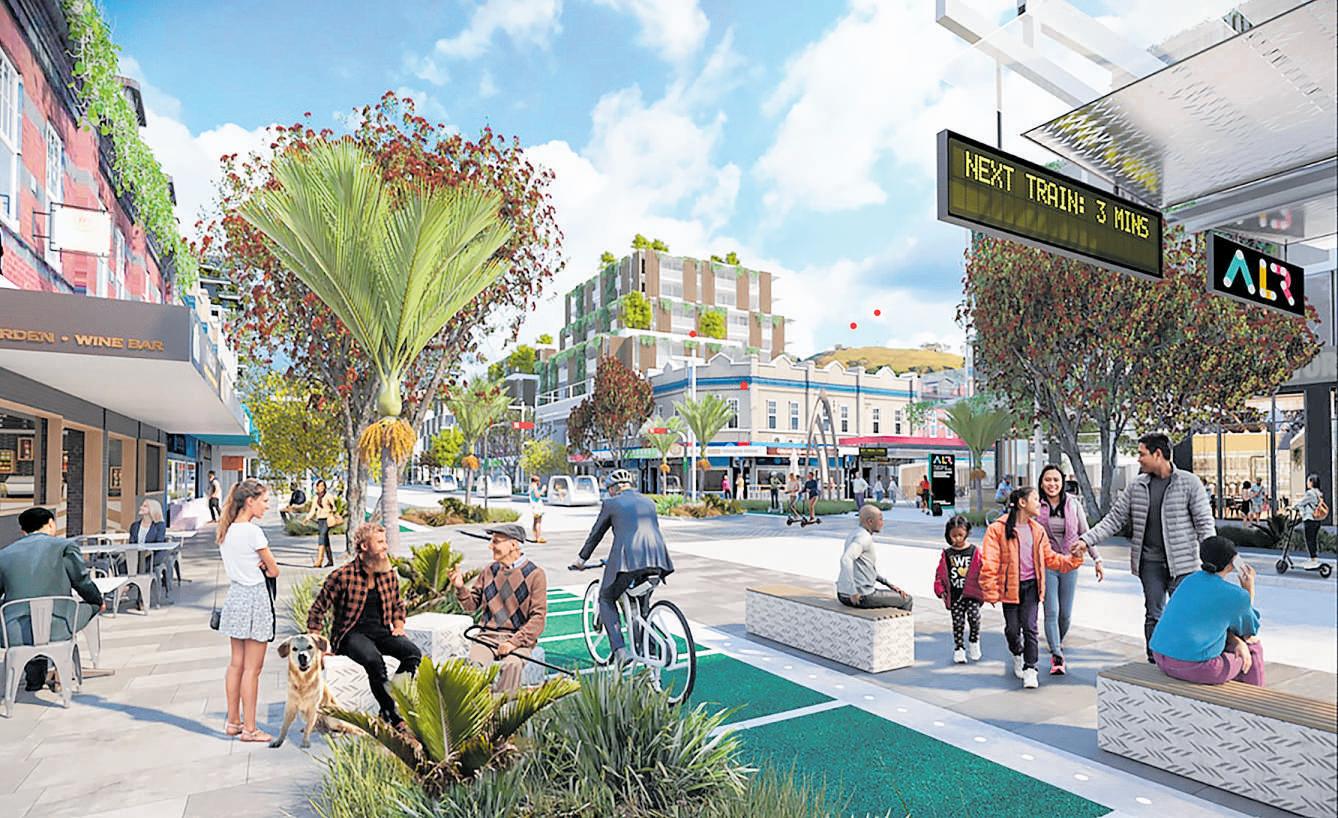
Twogenerationsago,in1956, thousandsofpeopleanda
brassbandpackedcentral Aucklandtofarewellthe city’slasttram.AsTramNumber304 rumbledalongQueenStforthelast time,manythoughtthatjourney markedtheendofthecity’sdecadesoldrelationshipwithlightrail.Far fromit.
Sincethe1950s,thecity’sgrowth hasbeensignificant,puttingTa¯maki Makaurau’sinfrastructureandhousingunderincreasingpressure.
Itisestimated320,000newhomes willneedtobebuiltby2050.Growth bringsbothopportunitiesand challenges,andtheneedtodothings differently.Thecarsandbusesthat replacedouroldtramscannolonger provideallthetransportsolutionsfor agrowingcity.
Variousnationalandregional investigationsoverthepast10years —includingthejointGovernment/ AucklandCouncilAucklandTransportAlignmentProject(ATAP)— identifiedtheneedforrapidmass transitorlightrailtosupportthecity.
Letmebeclear:thecaseforAucklandLightRail(ALR)isstrongandit’s not arecentwhim.Lightrailhasa
● AucklandLightRail’svisionis broadandambitious —itwillallow avibrantandmodernAucklandto growandprosper,andmakeit easierforAucklanderstolive,work andplayintheircity.
● AucklandLightRail’s 24-kilometre-longrouteand18 stationsconnectspeopletocentral cityandairportjobcentresacross Auckland’scentralisthmusand communitiesatMa¯ngere, OnehungaandMtRoskill.
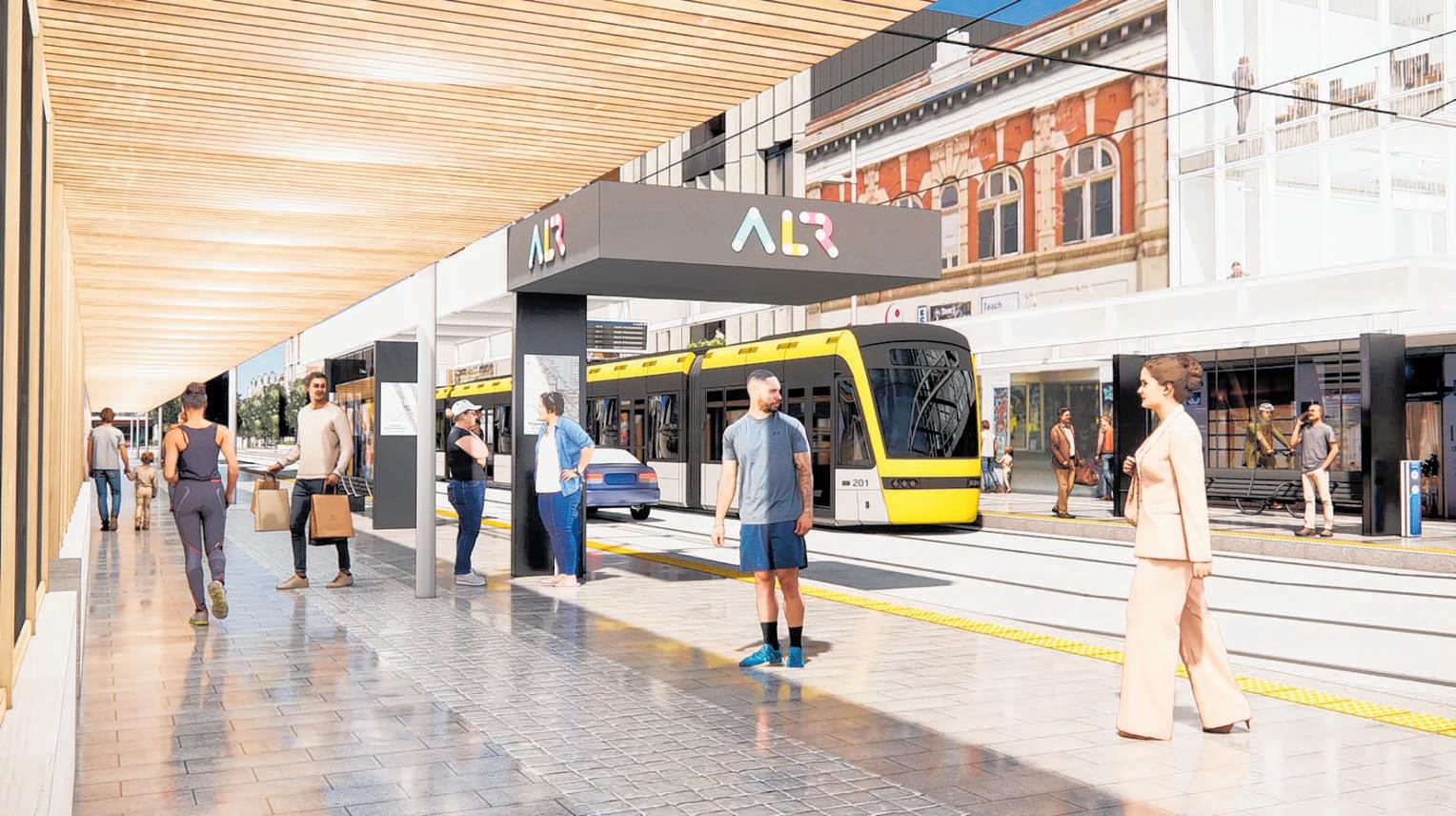
● Detailedplanninghasstartedon developingtherouteanddesign. Thiswillhelpnarrowdown constructioncosts.
● LargelyCrownfundedrather thanratepayers,withworkunder wayonfundingandfinance mechanismswiththeobjectiveof includingadditionalprivate/ developerinvestment.
● Forgetthetimetable —state-ofthe-art, high-tech light rail services willbefrequent,quicker,saferand morereliable —traveltimestothe centralcityfrommostdestinations willbemorethanhalved.
AucklandLightRailwillbeseparatedfromotherroaduserstominimisedisruption.
clearproblemtosolve —wearenot building astand-alonetransportsystem.Itisanimportantbuildingblock in amuchwidertransportplanthat includesroads,heavyrail,ferriesand walkingandcyclingtohelpAuckland growandprosper.
Land,orthelackofit,is aconstraint togrowth.Attheskinniestpartofthe centralisthmus,barely acoupleof kilometresseparatethePacificOcean andtheTasmanSea.Crowdedroads, busybuscorridors,railways,electricity,gasandtelecommunications links,pipesforcleananddirtywater, andhomesandbusinessessqueeze intothatspaceunderpinningtheimportanceofmakingsurethedevelopmentoftransportandlanduseare plannedtogether.
Abigchunk —21percent —ofthose 320,000newhomesforAuckland willbebuiltalongALR’sindicative corridoracrosstheisthmus.Those homeowners,andmany,manyother Aucklanders,willneedthesubstantialandpositivechangesignitedby lightrail —easierandcongestion-free journeystoaccessjobsandeducation,communitiesthataresaferand morepleasanttocallhome,anda cleanerandhealthierenvironment.
Planninganddesigninga 24-kilometre-longworldclasslight railsystemlinkingtheairportprecinctandcentralAucklandjob centreswithcommunitiesacrossthe centralisthmusiswellunderway.
AucklandLightRailishugeinits visionanditsscope —nothingonthis scalehasbeenbuiltinNewZealand before —butwemustnotrunaway frombiginfrastructure.Ifwetakethat attitude,theWaterviewtunnel,the CityRailLinkandtheCentralInterceptormayneverhavebeenmore thandreamsandvisions.
Auckland’srecorddeliveringhuge infrastructureisimpressive.Thekey tosuccessismanagingtherisksand challengesbigprojectswillthrowup. We’retakingthefirststepstodothat. Astand-alonecompanywithan independentboardcalledAuckland
AucklandLightRailis hugeinitsvisionandits scope —nothingonthis scalehasbeenbuiltin NewZealandbefore— butwemustnotrun awayfrombig infrastructure.

LightRailLtd(ALRLtd)hasbeenset
upas aCrownEntityCompany.Itputs usin abetterpositiontodeliverthe project.
ARLLtdhasapprovedtheProject FundingandFinanceAgreement (PPFA)whichsetsouttheobjectives, termsandconditionswhichthecompanyisexpectedtoprogressthe project,aswellasitsassuranceand monitoringarrangementsandthe rolesoftheCrownandpartners, includingCrownfunding.
ALRLtd’sestablishmentcoincides withtheannouncementofAurecon andArupaspreferredalliancepartnerstoworkwithusonourplanning anddesignphase.
We’reoperatingin averycompetitiveinternationalmarket,butwe’ve attractedsomeoftheworld’sbest talent —brilliantpeoplewithimpressiveinternationalrecords.
WiththeprojectgainingmomentumNewZealandisseenbymany
ofthemas agreatdestinationforthe nextchapterintheircareers.
Ourteamhasthelightrailskillsnot foundinNewZealand —the engineers,infrastructureplanners anddesigners,stationarchitects, environmentalistsandeconomists whohavehelpedbuildlightrailsystemsaroundtheworldandarenow helpingdeliverourownfromscratch.
They’reworkingondeveloping ALR’srouteandtheproposedlocationsofupto18stations,preparing theCorridorBusinessCase,lookingat howthesystemwillbebuiltand funded,andgettingreadythe consentsneededforconstruction.
Ourshort-termgoalsare demanding,andourworkingenvironmentisfastpaced.
Wewillsoonstartourgeo-tech programme —sinkingthefirstbore holestotestifsoilconditionssupport tunnelling.
EarlyintheNewYearwewillstart engagingwithcommunitiesonour preferredrouteandstationlocations
Mid-2023thefirstoftheconsents weneedtofurtherprogresstheprojectwillbelodged.Aroundthesame time,weaimtohaveourCorridor BusinessCasecompleted,thedocumentweneedtosecurefurther funding.
Alongsidethealliance, aseparate streamofworkisalreadyunderway toplanhow acompletedAuckland LightRailwillbeoperated —everythingfromthetypeoftrainswe shouldhave,theirdepotsandmaintenance,andthesignallingsystems.
Outsideourownprogrammes,we areworkingcloselywithAuckland Airport, akeydestinationforthe manythousandswhowillworkthere, andtravellerstoo,toensurecontinuitywithitsexpansionplansandours forlightrail.
Itisfurtherevidencethatwe’re pressinghardontheacceleratorto deliver aprojectthatwillbringhuge andexcitingchangestoAuckland, andtoNewZealandaswell.
ALRconstructionwillemploy thousandsofKiwis —localinfrastructureandconstructioncom-
panies,subbiesandworkers.There’s alotmoretoitthan aweeklypay chequegoingintopeople’spockets. Ourconstructioncomplexitiesand challengeswillupskillourworkforce andthatwillbenefitNewZealand todayandwellintothefuture.
Worldwide,lightrailisresurgent reflectingthegrowthincityliving Bymycountfrom2010-19,morethan 400projectsareunderway —33new systemshaveopenedrecentlyinthe Asia-Pacificregion —andanother500 orsoarebeingplanned.InNorth America,wherethecarisking,16-lane motorwaycitieslikeHoustonin TexasandTorontoinCanadaare embracinglightrail.
USAstudiesindicatethatbusiness investmentandlocationdecisions arebeinginfluencedbyaccesstolight railsystemsandtheeaseforpeople togettoandfromwork —theycall it avirtuouseconomiccyclebenefitingworkersandemployersalike.
Conversely,citiesthatdonotinvestinrailtransitarefindingthat congestionandpollutionquicklyincrease, aproblemthataccelerates withgrowthandnegativelyimpacts theirabilitytoexpandtheireconomiesandachieve agoodqualityoflife.
Nowit’stheturnofAuckland.We arenowthreetimeslargerthanNew Zealand’snextbiggestcity,andthis country’spremierinternationalgatewaytotheworld.Thecity’sgrowth willcontinue,andlightrailwillbe criticaltohelpmanageandsupport it.
Ican’tguarantee ahat-wearing crowdor abrassband,but Ireckon thatwhentoday’smodernversionof lightrail —onethatishigh-tech, frequent,fastandsafe —returnsto Aucklandtherewillbeplentyto celebratein ahealthiercitythatis moreaccessible,moreproductive andmoreprosperous.
● TommyParkerischiefexecutiveof AucklandLightRail AucklandLightRailisanadvertising sponsoroftheHerald’sInfrastructure report
● LightrailwillhelpAuckland grow —itwilldrivehousingand businessgrowthalongitsroute, andbethecatalystforneighbourhoodregenerationandpeoplefriendlystreets.
● 17percentofAuckland’s populationgrowthand33percent ofjobgrowthwillhappenalongthe lightrailcorridoroverthenext30 years.
● Lightrail’simpressive“green” dividendmakesthecitycleaner andhealthier —carandbus congestionandpollutioniscut,and around14,500fewervehiclesneed tobeontheroadduringrush hours.
● Lightrailwillcarry alotmore peopleeachtripthan acaror double-deckerbusandthe frequencyofservicesishigherthan heavyrail.
● Investinginhighcapacity,high quality,rapidtransitiscriticalto developing amodern,international,connectedcity.
● ItwillexpandAuckland’spublic transportnetwork,connectingwith city-widebus,heavyrailandferry services.
● Buildinglightrailishuge —the country’slargesttransport infrastructureproject.
● Halftheroutewillbetunnelled avoidingdisruptionanddelayon busystreets,especiallyaroundthe citycentre.
● Lightrailisseparatefromother vehiclesonitsownlanesandfree fromtrafficsignalsandcongestion.
● Centralcitytotheairportwillbe thebackboneof alightrailnetwork thatcanextendtothecity’snorthwestandacrosstheWaitemata¯ HarbourtotheNorthShoreinthe future.
WorkonthesecondAucklandharbourcrossing couldbeginwithin sevenyearsandfollow hardontheheelsofthe$14.6billion lightrailproject.
MinisterofTransportMichael Woodsaidtheharbourcrossingwas acriticalpieceofinfrastructureand “wehavebroughtforwardtheplanningfromthe2040stothe2030sand evenfurther.

“Thereis aneedtogetonwiththe workbecauseoftheongoinggrowth (inAucklandandneighbouring regions).Theexistingharbourbridge stillhas alonglifeaheadbutitdoes faceresilienceissues.”
WakaKotahiNZTransportAgency hasjustputtheWaitemata¯Harbour Connectionsprojectoutforpublic consultationand aseriesofcommunitymeetingswillbeheldoverthenext threeweekstohearpeople’spreferences —whetheritbe asecondbridge ortunnel(s).

Woodsaidtheprojectteamwants tounderstandAucklanders’aspirationsfor afuturecrossingandthe typeoftransportmodes.
“Wehaven’tpredetermined whetheritwillbe abridgeortunnel. Thisstudywilllookatfutureoptions forpeoplewantingtodrive,walk, cycle,transportfreight,takethebus orperhapstravelbylightrailacross theWaitemata¯Harbour.
“Shouldpeoplewanttocycleor walk,thenthiscan’tbedoneina tunnelandonlyon abridge.Weare notrulingoutanythingandweneed tohearfromthepublicandmakean informeddecisionon atransformationalproject.”
Anotherroundofpublicconsultationwilltakeplaceearlynextyear whenfurtherinformationisshared onpossiblesolutionsandspecific options.
Woodsaid adecisiononthepreferredoptionwillbemadebythe middleofnextyear —andtheprocess willthenbeaccelerated.
“Alotofdetailedplanningwill
needtotakeplaceand afullbusiness casewillbecompletedinearly2024. I’dliketothinkworkcanstartinthe late2020s.”
Backin2008,AucklandTransport publishedthe Waitemata¯Crossing studythatidentifiedthepreferred optionfordeliveringsafe,responsive andsustainablecross-harbourtravel betweenNorthShoreandtheAucklandIsthmus.
Theoptionthatlongagowasto
extendthesuburbanelectricrailnetworkandStateHighway 1beneath theseabedintunnels,withanundergroundstationatWynyardQuarter —twotunnelsfortrainsandtwofor themotorwayeastoftheHarbour Bridge.
AucklandLightRailhasbeenreorganisedas aCrownEntityCompanychairedbyDameFranWilde andissettobecomethecountry’s largesttransportinfrastructureproject.
“Wearemovingforwardatpace,” saidWood.“Wewillgetintothe consentingstageandinitialworks shouldbeginnextyeartogetthe projectreadytogo.”
Twoalliancepartnershavebeen namedtoplananddesignthenext phasesofthetwobigprojects. Canadianenvironmentalconsulting companyWSP,AustralianengineeringconsultantSYSTRA,BecaandCox ArchitecturearehandlingtheWaitematacrossing.
Melbourne-basedAureconand London-basedArupGroup —both globalengineeringanddesignconsultants —areputtingthefinal touchestothelightrailplan.The
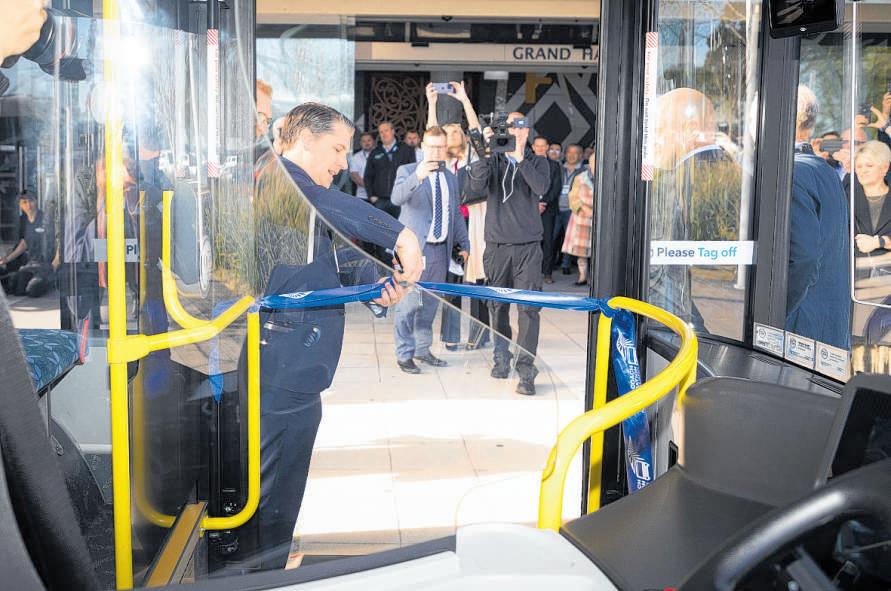
24kmlonglightrailisexpectedtotake sixtosevenyearstobuild.
TheGovernmentisdeterminedto link arapidtransitsystemdownthe spineofAucklandfromtheairportat Mangere,throughtheCBDandacross theWaitemata¯HarbourtoNorthcote andbeyond.
Thesystemwillalsolinkupwith theNorthernBuswayandmostprobably asimilarrapidtransitproject alongthenorthwestcorridorto Kumeu.ThefirststageoftheEastern BuswayconnectingBotanyTown CentreandPakurangawiththePanmurerailstationisalsocompleted.
“Ourlargestcityneedsanintegrated,multi-modalrapidtransit transportnetworkthatwillserve Aucklandersintothefuture,making itfastertomovethroughthecity, connectingcommunities,andprovidinggreateraccesstobusinesses,all thewhilereducingcongestionand loweringcarbonemissions,”said Wood.
Thegovernmentispushing through arecordpipelineoftransport infrastructureprojects,investing $8.7binrail,publictransport,walking andcycling,andsaferroadsunder
theNewZealandUpgradeProgramme,managedbyWakaKotahi andKiwiRail.There’salso$4.5b ayear availableintheNationalLandTransportFund.
“Wearecatchingupwithhistorical under-investmentthatgoesback30 to40years.It’s ahugeamountof investmenttogettowhereweshould be,”saidWood.
“Weareplanningformassrapid transportinAuckland,aswellas WellingtonandChristchurch.
“MayorRobbie’srapidrailplanwas rejectedbythethengovernmentin the1970sandAucklandhassuffered fromthat.”
Woodsaidthetransportprojects aretargetedtowardsdifferentmodes oftravel,decarbonisationandgetting tonetzerocarbonemissionsby2050.
“Everytonneoffreightweshift fromtheroadtorailrepresentsa significantreductionincarbon emissions.Todothis,weneeda resilient,reliablerailnetworkwhich hasmultiplebenefits —there’sless wearandtearontheroads,improved safetyanddecarbonisation.”
Athirdmainraillineisbeingbuilt betweenWiriandQuayParktoseparatefreightfrompassengertrainson Auckland’smetronetwork. AlongawaitedrailspurwillconnectMarsdenPointandNorthportwith Whangarei.ThePapakuratoPukekohelinewillbeelectrified.
Ashburton’shistoricrailcontainer terminalinthecentreoftownisbeing moved5kmnorthandthenewFairfieldHubwillhandletriplemore freight.TheHamiltonRuakuraand ManawatuBunnythorpeinlandports willbecomemajorNorthIsland freighthubsforroadandrail connections.
Majorroadingprojectscurrentlyin playincludethePenlinkexpressway toWhangaparaoaPeninsulanorthof Auckland;PapakuratoDruryState Highway 1expansion;andTakitimu NorthLinkoutofTauranga.
WakaKotahiismanagingthe ManawatuTararuaHighwaythat replacestheclosedManawatuGorge road,andtheMtMessengerBypass onthewaytoandfromNewPlymouth.
“Theinvestmentintransportinfrastructureoverthenextfiveto10 yearsisthebiggestseeninthis country,”saidWood.
Thenew mayor has promisedtofix Auckland:sowhat shouldhedo,asks
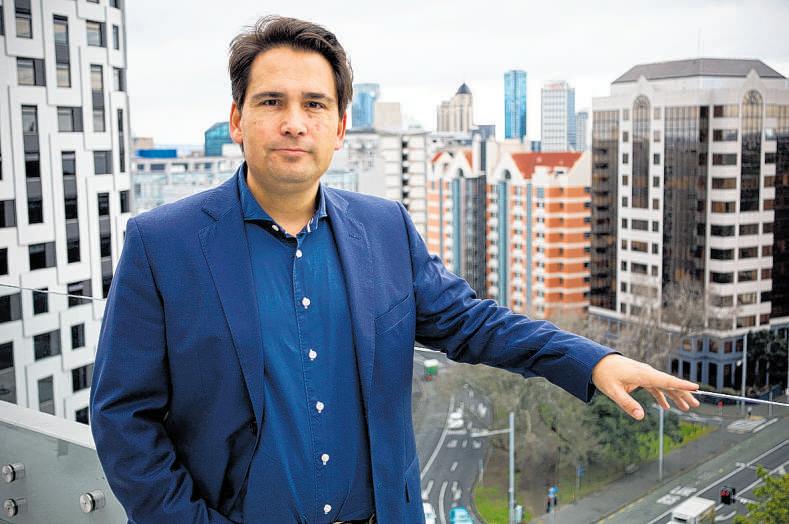

AucklandMayorWayne Brownhasenteredoffice on apromisetoshake thingsup,andthere’s plentyofanticipation —andspeculation —aboutwhatthiswillmeanfor Councildecision-making,particularly whenitcomestotransportinfrastructure.
Sofar,MayorBrownhasputAucklandTransportonnotice,andidentified ahandfulofpolicypriorityareas —somesensible,some alittleconfused —butheisyettoputforward anythingapproaching aprogramme.


As atransportinfrastructurepolicyandadvocacyorganisation,the AucklandBusinessForumislessinterestedinthedetailofthemayor’s plans,andmoreinterestedinthe strategicthinkingthatunderpinsit.























Asfaraswe’reconcerned,fixing Auckland’stransportsystemshould startwiththefollowingfiveprinciples.



Toomanytimesoverthelast decade,we’veseenpoliticians champion afavouritelarge-scaleproject,withoutsayingwhatproblemit’s meanttobesolving.Thisapproach iscompletelybacktofront,andnever endswell.





Thestartingpointmustinsteadbe toidentify asetofdesiredoutcomes (economic,social,environmental)for thecity,anddevelop asetofprojects thatbestdeliverthoseoutcomes.























MayorBrownisnotbigonvisions— and,tobefair,manyAucklanders havehad agutsfulofthemtoo —but hestillneedstopaint apictureofthe futurehewantsforAuckland,sowe canworkoutthebestmixofinfrastructureprojectstogetusthere.


Beforeinvestinginlarge-scale newroadsandraillines, greatereffortmustbemadetoim-
provetheperformanceoftheexisting network.Thismeansdealingwith chronicdeliveryfailureslikethebus drivershortageandtherailshutdown;investinginsmaller-scale interventions(likeintersection upgrades)thatcangettheroadnetworkhumming;andmovingahead withdemandmanagementtoolslike congestionpricing.
Squeezingmorejuiceoutof thelemonisgood,butitcan’t beallthatwedo.Aucklandisstill badlyinneedofnewinfrastructure —tofillthegapcreatedbyyearsof
under-investment,topreparethecity foraninevitablereturntopopulation growthpostCovid,andtoready ourselvesfor alow-carbontransport future.MayorBrown’sapparentscepticismtowards“transformational”investmentislaudable,especiallygiven thecurrenteconomicclimate,butit mustnottranslateinto asituation whereweshutupshoponbuilding criticalbig-ticketprojects.Wecan’t losesightofthecostofunderinvestmentforfuturegenerations.
qualityinfrastructuretoplayinstimulatingAuckland’seconomicrecovery post-pandemic,anditsgrowthinto thefuture.Butforthatroletobe fulfilled,economicbenefitswillneed tobegivenmuchmoreweightwithin theprojectassessmentprocess.Over recentyears,anincreasingfocuson non-transportobjectivessuchas climatechange,publichealth,and place-making,hascrowdedoutthe considerationofgrowth-and productivity-relatedobjectives.
Travel-timebenefitsforgeneraltraffic andfreight,andothermetricsthat speaktothecontributionofanefficienttransportnetworktoeconomicperformance,needtobebrought backtothecentre.
5Putcustomerbenefitsfront

Infrastructureisn’taboutmakingconcreteandsteelobjects, it’saboutprovidingsolutionsthat makepeople’slivesbetter.Mayor Brown’scallsforAucklandTransport tobeguidedby amuchstronger understandingofcustomerneeds andexpectationsarerightonthe money,andthisneedstoflow throughintoinvestmentdecisions. Projectperformancemustberegularlymeasuredthroughpostimplementationreviews,anduser benefitsproactivelyfedbacktothe public(who,ofcourse,arealsothe funders).Thisishowdecision-makers earntherighttokeepinvestinginthe future.
● SimonBridgesisCEOofthe AucklandBusinessChamberandChair oftheAucklandBusinessForum,a policyandadvocacyorganisation focusedonAucklandtransport infrastructureissues.
Engineeringfirm Aecomhas developeda methodof estimatingthe carbonimpactinan infrastructure project,writes GrahamSkellern
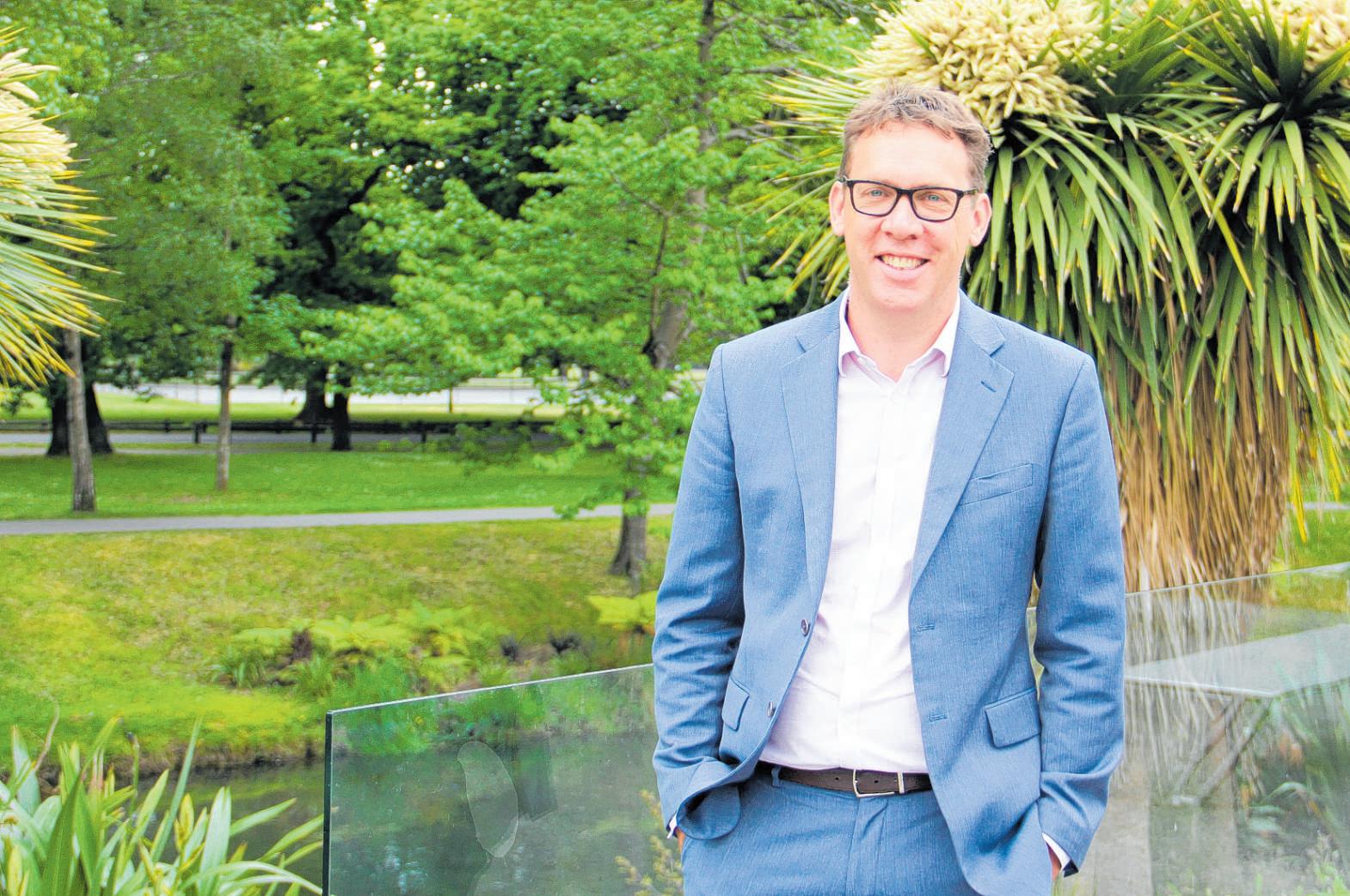
Infrastructuredevelopers shouldbynowbeconsidering thecarbonemissionsimpact andbuildingsustainabilityand resilienceintoprojectsatanearly stageofdesign —orevenbefore.
“Therecontinuestobe alowlevel ofconsiderationwhenitcomesto makingdecisionsaroundsustainability,”saysCraigDavidson,New Zealandmanagingdirectorofthe globalAecomconstructionengineeringcompany.
“Theinfrastructureindustryneeds tobemorecollaborativeinbuilding itscapabilityandcapacitytoembed environmentalvalues,bringinga science-basedlenstohavinginformeddiscussionsandmakinginformeddecisions.
“ItisimportantinNewZealandto showhowsustainabilityandresiliencecanbeembeddedattheindividualprojectlevelandsharethestories. Itcanbeoverwhelmingandproject developersarestrugglingtotranslate thisintoactionontheground.
“Wehave arealopportunityto workwithindustryandliftunderstanding,”Davidsonsays.“Youneed acommonlanguageandframework forassessment.
“Throughthedesignprocess,and evenwhenthebusinesscaseisbeing developed,reducingthecarbonintensityofprojectsinvolvesinterrogatingallthedesignelements,making changesifneededandusingsubstitutematerials if required.”
Davidsonsaysinfrastructureprojectsshouldhavelongertermhorizonsandbalancesocial,environmentalandfinancialvaluesforthegood ofthecountryandcommunity.
Aecom’slatestSentimentsurvey askedrespondentshowmuchconsiderationwasgiventosustainability andresilienceinplanningbuildings andinfrastructure.
Therespondentsrankedtransitioningto alowercarboneconomyand addressingclimatechangeimpacts andrisksslightlyhigherinimportancethanin2021.
Theconsiderationto agreatextent forclimatechangehaddoubledinthe lastfiveyears,but30percentofthe respondentsinthisyear’ssurvey werestillrespondingto alowextent. Themajority,60percentofthe respondents,weremakingmoderate responsestoclimatechange.
Worryingly,theresponseto naturaldisastershaddecreased slightlyinimportance,with20per centoftherespondentssayingthey consideredsustainabilityandresilienceinplanninginfrastructuretoa greatextent.
Davidsonsayseveryonesawthe impactoftheChristchurchearthquakesandtheneedtoensurebuildingsandinfrastructureareprotected andresilient.Overtimepeoplehave forgottenaboutthesesortsofevents becauseofcostpressuresandwhere toputtheinvestmentdollar.Infrastructureprojectsarestillbeingbuilt invulnerableareas.
TheSentimentsurveydidreveal strongsupportforplanningandresourcemanagementsystemstoensurebuildingsandinfrastructureare placedinsuitablelocationsaway fromrisingsealevelsandareasof frequentflooding,withseveral
Itisimportantin NewZealandto showhow sustainabilityand resiliencecanbe embeddedatthe individualproject levelandsharethe stories. CraigDavidson
actionstoaddressclimaterisks alreadyunderway.
Somerespondentscalledfor greaterunitybetweenlocalandcentralgovernmentsonmanagingthe mainissuesandensuringthat fundingandopportunitiesforcommunitiesareevenlydistributed. Takingonclimatechangewillrequire greatercollaborationandfacilitation fromtheindustry.
Respondentsalsocited alackof knowledgewithintheconstruction sectoronhowtodeliveronambitions suchasnet-zerocarbonemissions andclimatechangemitigation.
ThegovernmenthasnowpublisheditsNationalAdaptationPlanfor climatechange,settingouta proposedfutureworkprogramme andindicatingprioritiesforthenext sixyears.
TheSentimentsurveyfound manyinitiativesandprojectsarenew totheinfrastructureindustryandwill requireinternationalskillsandlocal upskilling.
Davidsonsaysinfrastructure sustainabilityandresilienceissimilar totheworkplacehealthandsafety journey.“Itsapplicationiscurrently
inconsistent,andweareseeingvariationsincapability.
“Itisaboutbuildingresilience aroundinfrastructurefortomorrow anddecadesahead,andtaking warmertemperatures,extreme weathereventsandrisingsealevels intoaccountwhenmakingwise decisionsonwherebuildingsare located.
“Wecanlooktodecarbonisethe infrastructurewearedesigningby strippingouttheembodiedcarbon andusingdifferentmaterialstojust concreteandsteel.Thisworksbest wheninfrastructureisdesignedfrom thestarttominimisetheimpact,so itistakenintoconsiderationwhenit isdelivered.
“TheCityRailLinkisonegood exampleofthat,”Davidsonsays.
Lowcarbonconcretemixesare nowcomingontothemarketand recycled,anti-corrosiveplasticcanbe encasedinconcrete.Timberwasn’t partoftheconversation10yearsago forlarge-scaleinfrastructureprojects, especiallyroadprojects,hesays.
TheAucklandCityMissionbuildingwasredevelopedwithlocallysourcedcross-laminatedtimberas themainstructuralsystem.Anexteriorcross-braceprovidedlateral stabilityaswellas astrongaesthetic andMa¯oriidentity.
Theconsentincludedretainingthe originaltimberstructureandheritage fabricofthePrinceofWalesCategory Bbuilding.
Thecross-laminatedtimbersystemprovided arobust,lightweight, prefabricatedresponse,andminimisedthebuilding’sembodiedenergy,constructiontimesandonsite labour.
WhentheNaenaePoolandFitness CentreandcommunityhallinLower Huttweredemolished,about80per centofthematerialswererepurposedorrecycled.Thelocalcommunitysecuredmemorabiliawhich
wasdonatedorretainedforreusein thenewfacility.
ting adollarvalueonthetraditional carbonintensityimpact,wehavethe opportunityfordrivinginnovation.”
Recycledconcretewentintothe roadbase,creatingsignificantcost savingstothecommunity —itwas taxpayers’moneythatcouldbe divertedintootherprogrammes.
AecomdevelopedtheProject
Thetoolisusedintheearlystages ofplanninganddesigninglandtransportinfrastructuretoprovide ahighlevelestimationofthegreenhouse gasemissionsthroughthelifecycle oftheproject,includingconstruction, operationandmaintenance.
DavidsonsaysPEET,whichis widelyshared,helpspeopleunderstandthecarbonintensityforthe differentdesignoptions.
“It’s akindofbenchmarkforpeople toevaluateandmonitorandtellthe storyofwhytheychose aparticular option.”
Hesaysthereis acostofcarbon andthisneedstobefactoredintothe conversation.
“PEETleadsustothenextobvious question:howdoweput adollar valuetocarbonemissionsandmake itpartofthepricingregime?Theaim ofthegameistoreducethecarbon footprintacrossinfrastructureprojects.
“Wecanbringglobalexpertiseto planninganddesigningprojectsand create atransparentandconsistent approachacrossthecountry.Byput-
AnAecompaperonthecostof carbonintransportinfrastructureappraisalsuggestedcountriesshould worktowards auniversallyagreed methodofestimatingthevalueof carbon.Thisislikelytohelpnarrow thegapinthevaluesofcarbonused indifferenteconomies.Clarityfrom appraisingorganisationsonthedefinitionofcarbonemissionsrelatedto construction,maintenance, operationsuchaslightingandcontrol systems,andembodiedcarbonwill helpbettertransparencyof assessments.
DavidsonsaystheUKisnow recommendingthatthecostormonetaryvalueofcarbonbeincludedin theappraisalprocessorbusinesscase forinfrastructureprojects.“Ifthecost istoohigh,thenisthereanalternative?Thebestoutcomefortheenvironmentmaybenottobuildinfrastructureatall.”
Whenlookingat aproblemanda solution,isthere anon-infrastructure way?Davidsonsaystransportinfrastructureissizedforthepeaktraffic flows,butCovid-19showedthat peoplecanbeflexiblewhenthey travel.
“Demandmanagementorcongestioncharging,suchasincentral London,canhelpsmoothoutthe peaks.“Thecongestionmoneycanbe usedformoresustainableprojects— it’s awin,winsituation,”Davidson says.
AccordingtoAecom,thebiggest winforNewZealandwouldbea renewedfocusoncross-industrycollaborationtodeliveronthenational netzerotargetsby2050. ● Aecomisanadvertisingsponsorof theHerald’sInfrastructurereport
Itistimewehad anewresource managementsystem,andthe Governmentisdeliveringone. ThecurrentResourceManagementAct(RMA)hasbeeninplacefor 30yearsandis,frankly,broken.
Ittakestoolong,coststoomuch andhasnotadequatelyprovidedfor developmentornewhomesnoradequatelyprotectedtheenvironment.
Bymycounttherehavebeen23 majoramendmentsandthousandsof minoronessincetheRMAwasintroducedin1991.Theyhaveincreased complexityandfailedtomakethe improvementneeded.
As aresult,theRMAhasbeena majorfactorinNewZealandhaving amongsttheleastaffordablehouse pricesintheOECD,andoneofthe reasonswehavehad ashortageof homesandfailedtobuildtheinfrastructureweneed.
Gettingdevelopmentsoffthe groundiscostlyandtime-consuming.
TeWaihanga,theNewZealand InfrastructureCommission,estimates infrastructureprovidersarespending $1.29billion ayearonconsenting processes,equivalentto5.5percent ofthetotalcostof aproject.
Thisputsusbeyondtheextreme endofequivalentcostsintheUKand EU,whichrangebetween0.1percent and 5percent.Costshaveincreased by70percentfrom2014to2019and timeframeshaveblownouttoo,increasingby150percentforinfrastructureprojects.Councilfeesfor notifiedconsentsareup124percent between2015and2019.That’swhy theGovernmentismovingtorepeal theRMAandpassnewreplacement laws,theSpatialPlanningBillandthe NaturalandBuiltEnvironmentBill, thisparliamentaryterm.
Wewanttosee asignificantim-
EnvironmentMinister David Parker sets out what is wrong with thecurrentresourcemanagementsystem,andtheplantofixit.

Theanalysis that accompanies thelawchanges estimatesthat thenewsystem willdeliver benefitsof$2.58 to$4.90for every$1spent.
DavidParker
systemwilldeliverbenefitsof$2.58 to$4.90forevery$1spent.Those benefitsflowtotheprivatesector.
On aconservativeestimate,costs touserswillfallby19percent ayear, or$149m,equaltomorethan$10 billionover30years.Benefitswill flowtothegeneralpublicthrough costsavingsforhousingandfewer consents.Theenvironmentalbenefits —whichcannotbevaluedin dollarterms —willbesubstantial.
Themostsignificantchangeto enhanceenvironmentprotectionwill be ashiftfromaneffects-basedapproachtoonethatisbasedonoutcomes.TheRMAapproachof“avoid, remedyandmitigate”allowedsmall negativeeffectstoaccumulateleadingtowaterdegradation,plus aloss ofbiodiversityandvaluabletopsoil.
TheNaturalandBuiltEnvironmentsActwillfocusonbiophysical outcomes,settinglimitstomaintain currentenvironmentallevelsandtargetswheredegradationneedstobe restored.
provementinhousingsupply, affordabilityandchoice,aswellas quickerprovisionofappropriate infrastructuretohelpourcommunitiesthrive.We’vealreadygotsome runsontheboard.
Recognisingtheurgentneedfor morehousing,lastyeartheGovernment —withthesupportofthe NationalParty —rolledoutmediumdensityresidentialstandards,which allowforuptothreedwellingsofup tothreestoreyseachtobebuilton eachsite,withlimitsonheight,site coverageandsetbacks.
Medium-densityresidentialstandards,alongwithothernationaldirection —suchasthenationalpolicy statementsonfreshwaterandon
highlyproductiveland —willbe carriedoverandconsolidatedinto theNationalPlanningFramework with anewparttoaidinfrastructure development.

Thefasttracklaw,putinplacein responsetoCovid,hasproveda success,reducingconsentingtimeby 15monthsonaverage. Aprocess similartothefast-trackprocesswill beretainedforinfrastructureand significanthousingdevelopments.
Butwewillnotadoptfast-trackfor allprojectsastheNationalPartyhas suggested.Theyareonthewrong trackonthat.Itwouldgumupthe system,turningfast-trackintoslow track.
Inthenewsystemtherewillbea
numberofotherimprovementstoaid infrastructuredevelopments.
Morethan100RMAplanswilldrop tojust15regional-levelplansacross thecountry.Thetimetakentopreparethemwillreducefrom10years to amaximumoffouryears.
Offtheshelfstandardsforhousing andinfrastructureprojectswillremovetheneedforbespokespecificationsforeachproject,lowering thenumberofconsentsneeded.
Developers,infrastructureprovidersandbusinesseswillseethelargestsavingsasconsentvolumesand costsdecrease,savinghundredsof millionsofdollars ayear.
Theanalysisthataccompaniesthe lawchangesestimatesthatthenew
ThebillsintroducedonNovember 15arebasedontherecommendations oftheRandersonPanel,whichdrew on averybroadrangeofadvice includingfromtheEMA,theEnvironmentalDefenceSociety,InfrastructureNewZealand,localgovernment, thePropertyCouncil,theProductivityCommissionandtheWaitangiTribunal.
Theywillnowgoto afullselect committeeprocessforthenextsix months.Weaimtopassthemintolaw in2023,beforetheelection.
Thechangeswearemakingwill makethesystemfaster,cheaperand better,bringingNewZealand’sresourcemanagementsystemupto datetomeetthechallengesourcommunitiesarefacing.

“Cogobuilds carbonfootprint managementproductsthathelp individualsandbusinessesto measure,reduceandoffsettheir impact onthe climate. We have integratedthis functionalityinto many of theworld’s largest bankingapps includingNatwest, RBS, andWestpac.WithAWS, we’vebeen abletobuild,scale, andgrowour business globally.”

CEOfor Asia Pacific, Cogo
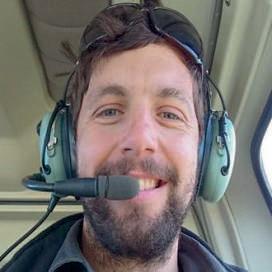


Hanson GeoNetDataManager,GNSScience
“Freightways picksup, processes, anddeliversmorethan50million parcelsaroundNew Zealandeach year.WithAWS,we’re ableto scale from 500to1500parcel scans perminute. This means duringbusyperiods,suchas pre-Christmas andonBlack Friday, we canincreasescannumbers from 600,000 to over1.5 million parcel scans perday,meaning fasterdeliveriesforeveryone.”
MatthewCocker ChiefInformationOfficer, Freightways
 JulieLindenberg
JulieLindenberg
Latenextyear,NewZealand’s electricitygridwilldraw downitsfirstpowerfroma large-scalesolarpower station,asLodestoneEnergy switchesonthenewinstallationnear Kaitaia.
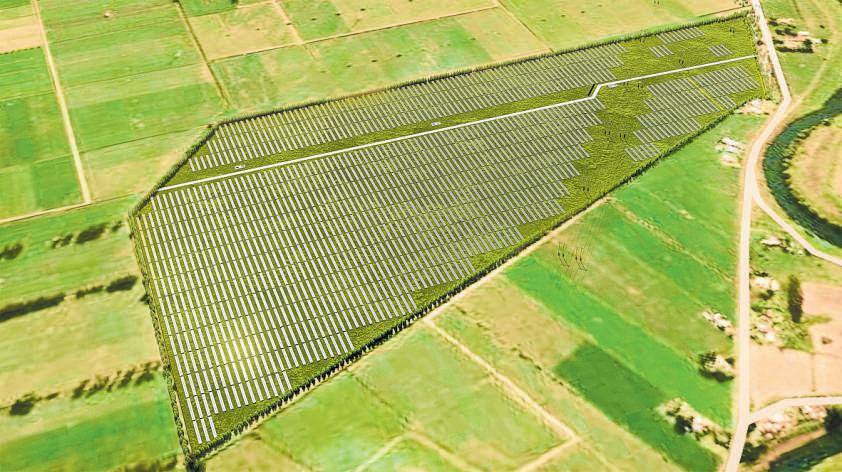
Thesitewillgenerate47GWh— enoughtopowerroughly5500 homesannually —andisthefirstof fivesolarplantsplannedbyLodestone.Oncebuilt,theinstallationswill collectivelygenerate265GWhper year.
Theplantswillhelptodiversifythe rangeofpowersourcesfeedinginto thegridandisanotherstepinthe country’stransitionto alowercarbon future.
Westpacisproudtobethesole seniordebtproviderofwhatwillbe atransformationalproject.We believerenewableenergyiskeyto powering asustainableandprosperousfutureforAotearoa,asmoreof theeconomyelectrifiesandthedemandforloworzeroemissionsenergygrows.
We’refortunatethatNewZealand alreadyhas astrongrenewableenergyfoundation.Electricityfrom hydropowerstationshasbeenlightinguphomesandbusinessesfor decadesandtheamountofrenewableenergybeingutilisedbyKiwis andthecommercialsectoraround themotuisgrowing.
Withthecountry’spushtoreduce greenhousegasemissionsandthe needtodiversifytheenergysector andtransitionawayfromfossilfuels, theroleofaffordableandaccessible renewableenergywillonlygrow.
Amorediverseenergysectorwith morerenewableswillultimatelyhelp Kiwis’backpocketthroughincreased competitionandgreaterchoice.
BostonConsultingGroupnotedin arecentpaper— TheFutureisElectric —thatthepaceofdevelopmentiskey forNewZealandtomeetitsemissions reductiontargets.
Itnotedtheelectricitysector“can helpreduce70percentofcarbon emissionsrequired”bythenetzero carbontarget.Itsays“unprecedented investment”isrequired.
Butas atumultuous2022draws to aclose,there’snosmoothpathin theyearsaheadfordevelopingrenewableenergy.Theworldisfacing uncertaintimes,withstrongeconomicheadwindsandrisinginterestrates.
Intheshorttermtheseconditions arelikelytodeterinvestmentin renewableenergyprojectsthatare notalreadyoutofthestartingblocks.
However,itisimportantthepipelineofworkremainsfullasnew infrastructurecantakemanyyears toscope,design,fundandconsent, andthat’sbeforeshovelsevengoin theground.Becausetheleadtimes arelengthy,weneedtolookthrough theeconomiccycleandplanforthe decarbonisationthatiscomingaswe respondtoclimatechange.
Regulatorybarriersremainin placeincludingcomplexOverseas InvestmentOffice(OIO)andresource consentprocesses.
Arecentconsultationpaperbythe ElectricityAuthoritynotedtheOIO requirementswere a“keyconcern” foroverseasdeveloperswantingto dobusinesshere.TheAuthorityrecommendedtheOIOpublishguidanceforoverseasinvestorsbythe endofthisyearandprovidea helpdeskforthem.
Accordingto aTreasuryReportin 2019,theOECDcompared68 countriesandratedNewZealand’s OIOregimetheseventhmostrestrictive.NewZealand’sabundanceof sunshineandwindcoupled witha relativelyunderdevelopedrenewableenergysectorlendsitselfasan appealingpropositionforoverseas investors.
Butweneedtomakeitaseasyas possibleforoverseasbusinessesto startnewrenewableenergyprojects here. AsimpleandfastOIOprocess willgo alongwaytohelpingthis happen.
WestpacNZwelcomesreformsto OIOprocessesinrecentyearsbut notesthatinSeptember abillto exemptinvestorsfromOECD countriesfromOIOapproval(except residentiallandinvestments)was rejectedbyParliament.
WehopetheGovernment’splanto
repealtheResourceManagementAct (RMA)willalsoleadto amorestreamlinedprocessforbusinesseswanting toinvestinthesector.
Asthethree-yearpointofliving withCovid-19fastapproaches,the pandemicisstillhaving anegative effectontheeconomy.
Increasedcostsfromsupplychain issuesarestillhittinglocalbusinesses hardandemployerscontinuetosee staffoffworkwithillness.
Withnoendinsighttothewarin Ukraine,Europeancountriesareincreasingrenewableenergygrowthto reducedependenceonRussiangas —tyingupmaterialssupplyandabsorbingthespecialistlabourforce whoarenecessarytomakethese projectshappen.
Solarandwind-generatedelectricityintheEUincreasedby arecord 13percentfromMarchtoSeptember amidtheconflict,accordingtoenergy think-tanksE3GandEmber.
DrChrisRosslowe,senioranalyst atEmber,saidrenewableelectricity helpedbufferEurope“fromaneven worseenergycrisis”.
Netherlands,Austria,Denmark andPortugalareallaimingtohave 100percentrenewableproduction ofelectricityby2030.
Westpacisforecastingthatinflationwillstillbearound 4percentby theendofnextyearandwon’tfall backwithintheReserveBank’s1-3per centtargetrangeuntilwellinto2024.
Theseinflationarypressuresare drivingupthecostofmaterialsfor renewableenergyprojects.
Thecostofsteelissoaringanda numberofrawmaterialsneededfor solarandwindareforecasttobein shortsupply,includingcopperand nickel.
Labourcostandavailabilityisalso challenging.
ApaperbyPrincipalEconomics aboutthecostofdelaysininfrastructurenotedthatthecostofdelays intheWaikatoExpresswayalonehas seenforegonebenefitsof$2.3billion or1.2timesthecapitalcostofthe project.
Sowhatneedstohappentoaccelerategrowthinourrenewableenergy sector?
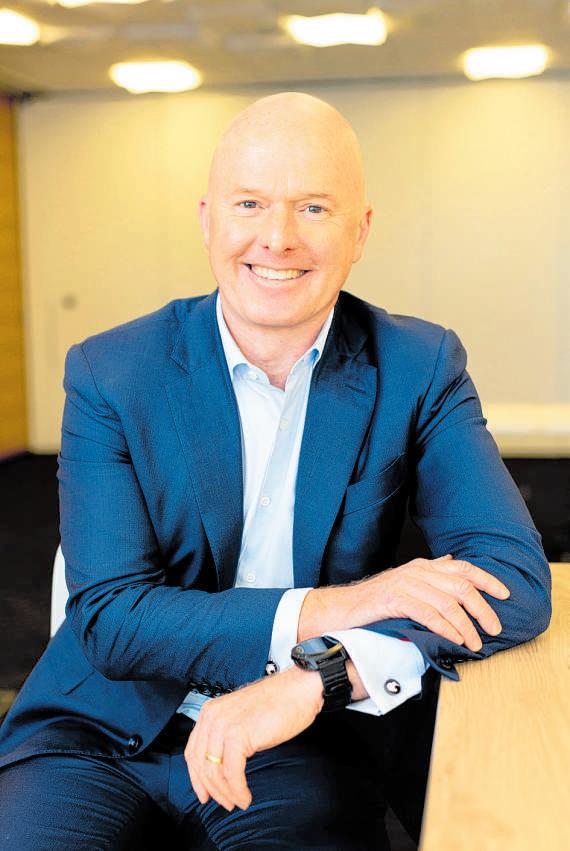
WestpacNZbelievesthereisscope toreducebankcapitalrequirements forgreenassets.
TheGovernmentisimplementing highercapitalrequirementsoverthe nextsevenyearstotryandbolster banks’abilitytowithstandglobal shockslikethepandemic.
Despitethebarriersandsometimesslowprogressinexpanding renewableenergyinNZ,weareoptimisticforthesectorandcansee lightonthehorizonandrecognise recentOIOreformsandplannedRMA reformsshouldmakethingseasier.
WestpacNZhasbeenlookingat opportunitiesintheelectricitysector tohelpNewZealandmeetits emissionsreductiongoals.

Wearefinancing anumberof renewableenergyprojectswhich contributetowardstheannounced pipelineofapproximately10GWof additionalelectricitygenerationcapacity.

Theseprojectsincludemanynew andsmallergeneratorswithonly50 percentinvolvingthecountry’stop fiveelectricityproviders.
Renewableenergyis acrucialsectorforAotearoa’sfutureandWestpac NZwantstosupportittomakeitgrow.
● ReubenTuckerisGeneralManager ofInstitutionalandBusinessBanking atWestpacNZ Westpacisanadvertisingsponsorof theHerald’sInfrastructureReport
Critics saw ultra-fa ars the finishlineitisprovingits worth
Zealandfrombeinganalso-ranto havingworldclassbroadband.
Onedayshortlybefore Christmas, aChoruscontractorwillconnect aslenderstrandofglassfibreto afamilyhomeandpowerupthe hardwareneededtodriveit.
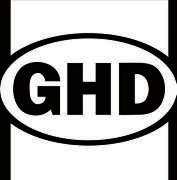
Whenthatlinelightsupandthe datastartsflowing,the11-yearUltra FastFibreprojectwillfinallyend.
Fromwhereweareinlate2022, thewisdomofbuilding anationwide fibrenetworklooksobvious.That wasn’tthecasewhenSirJohnKey andStevenJoycefirstplannedthe networkin2008whilepreparingthat year’selectionmanifesto.Criticssaw itas ahigh-riskproject.
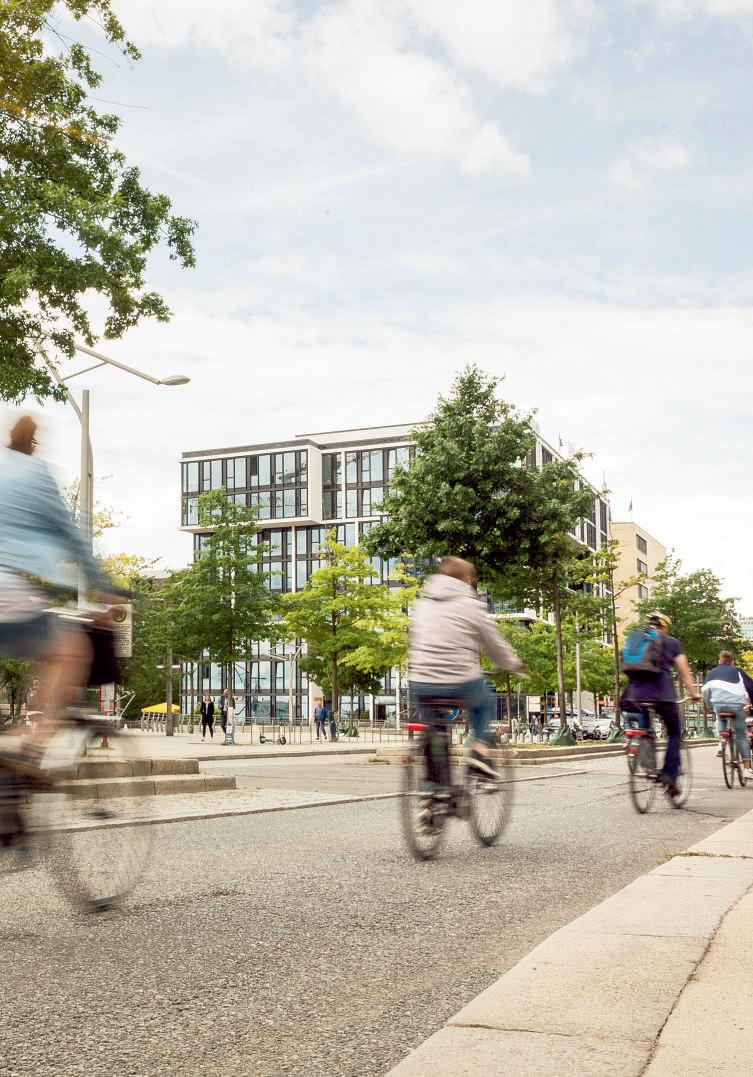
TheUltraFastBroadband(UFB) programmetheydevelopedhasbeen asuccessbyanystandard.Theinitial goalwastoconnect75percentof thenation —incitiesandtowns —to thenetworkover anine-yearbuild. Asthenetworkgrew,andpeoplesaw thebenefitsoffast,reliablebroadbanddemandsoaredwellaheadof initialprojections.Itwassopopular successivegovernmentsrevisitedthe planstwiceandfundedtheUFB2and UFB2+extensions.
Ataneventtomarktheendofthe project,ChorusCEOJBRousselot notedthat87percentofNewZealanderswillnowbeabletoaccessthe fibrecablepassingtheirgateandthat
sevenoutof10peoplewhohave accessarenowconnected.Hesays theUFBprogrammehasbeen abipartisan,multibillion-dollarpublicprivatepartnershipcollectivelydeliveredontimeandwithinbudget.
“NewZealand’sgeographychallengeduswithitsruggedlandscapes andisolatedpopulations,butwegot fibreto acollectionofcommunities, manyremote,smallandsparsely spreadthroughoutAotearoa;places likeOpononi,with apopulationof 678,Kaponga,with312residents,and StArnaud,with111,wereallconnectedtofibre.Addingthesetowns totheUFB2extensionmeant afurther 423,000NewZealanderswouldhave anunconstrainedconnectiontothe
world,hesays.
Chorus,alongwiththeotherfibre companies;TuatahiFirstFibre,EnableFibreandNorthPower,havebuilt anetworkthathascatapultedNew
Itwillputuson apathto providingfurther significantbenefitsfor ruralandremote communitiesand businesses.

DavidClark EconomyandCommunications Minister
Inrecentyearstherestofthe worldhasmovedon.European Unionpolicyisthatfastfibrenetworksshouldbeeverywhereby 2030.Ruraluserswillgetthesame servicesatthesamepriceaspeople livingincities.GovernmentsinWesternEuropenowthinkpeopleinrural areasshouldnotbesecond-classdigitalcitizens.Spainaimstoconnect everyonebytheendof2025,other Europeannationsareon asimilar path.
Ruralbroadbandhasalwaysbeen controversialinNewZealand.When KeyandJoyceembarkedontheUFB 15yearsago,ConnorEnglish,with FederatedFarmersatthetime,said itwouldbebesttospendthelimited budgetforfibreinruralareasasthey neededthetechnology moreandit waswherethenation’swealthis created.Therecanbegoodfixed wirelessbroadbandinpartsofrural NewZealand,yettherearemany otherplaceswhereconnectivityis distinctlysecondrate.

AttheChoruseventRousselot said:“Whatdoes afuturewithout fibrelooklikeforthe650,000Kiwis outsidetheUFBfootprint?While therewon’tbe aonesizefitsallsolution, Iknowthatwithwhatwehave achievedalready,therewillbe away forwardthatconnectsAotearoaso thatwecanalllive,learn,work,and playinanever-evolvingdigitalworld. There’sundoubtedly abigsocietal andeconomicalvalueindoingso.”
Tobackupthesesentiments, Choruscommissioned areportfrom
theNewZealandInstituteofEconomicResearch.Itconcludesthat extendingbroadbandintoruralareas woulddelivereconomicbenefitsof $16.5billionover10years.
Themainbeneficiaryofextending high-capacitynetworkswouldberuralhouseholdswhowouldgetbetter employmentopportunities,telehealthservicesandeasierinteractionswithbanksorgovernment agencieswhichincreasinglywantto transactdigitally.Ruralbusinesses willgetaround$344million ayear intimesavingsand afurther$189.5m fromproductivitygains.
Atthesameevent,digitaleconomyandcommunicationsminister DavidClarksaidtheGovernment planedtofurtherextendthefibre network.Hedidn’trevealdetailsbut toldtheaudienceheexpectstorelease adocumentsoon,outliningthe Government’sstrategicvisiontoimproveNewZealandconnectivity overthenext10years.
“Itwillputuson apathtoproviding furthersignificantbenefitsforrural andremotecommunitiesandbusinesses.Furtherfocusisneededto thinkaboutconnectivityforourrural communities.Governmentwillcontinuetoworkonfutureprojectsexpandingthefibrefootprintbeyond thecurrentareas,”saidClark.
“Thiswillbeoneofthethingstaken intoconsiderationasweoutline thoseplans.Weknowfibrewon’tbe theanswertoeverythinginevery situation,findingtherightmixof technologysolutionsandincreasing people’sawarenessabouttheoptions availabletothemwillbe achallenge.”
Committed to building investable and inspiringplaces that foster belonging.JBRousselotsees abigsocietalandeconomicalvalueinconnectivity. Infrastructure BillBennett
GHDchiefeconomistDavid NormansaysNewZealand faces achallengedelivering infrastructureat atime whentherestoftheworldthinksit canuseinfrastructuretobuilditsway outofeconomicweakness.
NewZealandiscompetingona worldwidescalenotonlyforlabour, butforthematerialsandeventhe machineryneededtobuildinfrastructureprojects.
NormanpointsoutthatmajorinvestmentinNewZealand’sinfrastructurewasalreadyunderway beforetheCovid-19pandemic disruptedprogress.
TheLabourGovernment’sNew ZealandUpgradeProgrammeset aside$12billioninlateJanuary2020 forinfrastructurespending.
“Thenwehadtheshovel-ready projectsthroughtheemergency CovidBudget,thatwasabout$3b,”he relates.“Thentherewasthe$2binfrastructureaccelerationfund —a pot ofmoneyrunbyKa¯ingaOrathat councilscanbidfor.Itisspecifically fortheinfrastructureneededtoenablemorehousing.
“There’stheClimateEmergency ResponseFund,anotherpotof moneyforinfrastructurefunding.
“Wehaveallthesepotsofmoney thatdidn’texistthreeyearsago, whichisfantastic.Itacknowledges thatweneedtogetonandbuild infrastructure.”
ButNewZealand’sinfrastructure sectornowfaces avarietyofresiliencechallenges;themainonesare financial,climateandsocial.
Normanexplainsthatbycreating asizeablepoolofmoney,theGovernmentrelievedoneaspectofthefinancialresiliencechallengefacingthe sector,onlytoarriveatothers.
“We’rein aglobalcompetitionfor resources,whileatthesametimethe worldisenduringsupplychain disruptionsbecauseoflockdowns.
“Andnowweareseeinginflation notonlyinthewidereconomy,but alsoinconstructionandinfrastructuredelivery.
“Itmeanswecan’tbuildallthe thingswewant.Therearen’tthe workerstodoitandsomeprojects willbeeye-wateringlyexpensive.”
ForNorman,financialresilience meansweneedtobewiserabout prioritisingwhatwedeliverandhow quickly.Heasks:“Whatarewegoing todeliver,when,atwhatpriceand whoshouldpayforit?”
Hesaysthelastofthesequestions isthehardestanditisonethatNew Zealanddoesn’ttendtoanswerwell eitheratthecentralorlocalgovernmentlevel.
Localgovernmentfinancefor infrastructureprojectsisfamiliarterritoryforNorman.
BeforehejoinedGHDhewasthe chiefeconomistforAucklandCouncil forfourand ahalfyears.Previously heworkedfororganisationslike WestpacandPwC.
“Ifyouwanttobuild400new houses,whoshouldpayfortheinfrastructureneededtosupportthe growth,orshouldthedevelopment beprimarilypayingforitself?
“Historicallyweputtheburdenon thegeneralratepayerratherthan lettingthedevelopmentpayforitself. Andnowwe’vegotinto abindbecausethatmoneyisrunningout.
“Ratepayersareunderstandably concernedaboutlargeraterisesata timeoffastrisingcostofliving.The systemwehaveatthemomentis brokenanditmeanswe’llgetfurther andfurtherbehindwithdelivering theinfrastructurebecauseinthat sensewearenotfinanciallyresilient.”
ThreeWatersproject
Anobviousexampleofthisisthe plannedThreeWatersproject.
Leavingthepoliticsaside,thereis widespreadagreementthatNewZealandhas aproblemwithdelivering safedrinkingwateralongwithreliablewastewaterandstormwater services.

Normansayseveryoneconcerned knowsweneedtospendmassively moreonwaterinfrastructure.
Theargumentsareabouthowwe payforit.
ThistouchesonsomethingimportanttoNorman’sviewoftheinfrastructuresector.Hesaysitisimportanttorememberthat“infrastructure isnotanendinitself;it’s ameansto improvingthequalityofpeople’s lives”.
Viewedthroughthislens,Norman saysthekeyistofocuson aproject’s outcome.InthecaseoftheThree Watersproject,thekeyistofocuson theoutcomeandachieveitat aprice thatcanbeafforded.
“Theoutcomewewantiswater thatdoesn’tmakepeoplesick.We needtostayfocusedonthisandnot getobsessedwithoutputsandtargets thatmightberightforonepartofthe
Wecan’tbuildall thethingswewant. Therearen’tthe workerstodoit and some projectswill beeye-wateringly expensive.
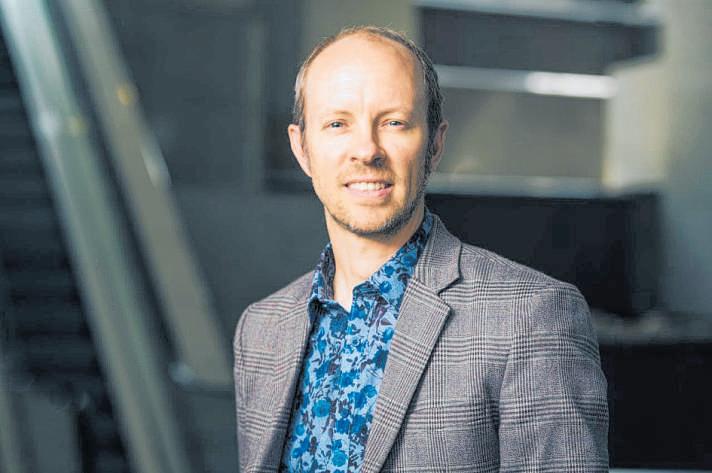 DavidNorman
DavidNorman
countrybutnotanother.
“Wewantfinancialresilience;we wanttopicktherightprojects.We need arobustprocesstoprioritise whichprojectsgetdonefirst.”
Costescalationisanotherburning issuewhenitcomestofinancialresilience.Normanisworkingwith clientswhofacecostescalationsand aretryingtomitigatetherisks.With largeprojects,it’spossibletogodirect andbulk-buymaterials,which(toa degree)canreducetheriskfrom geopoliticalchanges.
Otherwise,itmeansmoreflexible procurement.“Costescalationisa functionoftwothings.First,the lockdowns.It’snotthattheywerethe wrongthingtodo,butwearenow reapingtheconsequences,”Norman observes.
“Chinastillrunsanelimination policyandisshuttingdownfactories andcities.That’shavinganimpacton globalsupplychains.
“It’slike alittlestonedroppedin thepond,therippleskeepgoingfor months,evenyears.
“Second,we’vecomethrougha periodofincrediblycheapmoney. Thatwas agoodtimetoinvestin infrastructure.So,everyoneinthe developedeconomiesworkedtheir waythroughtheonerousdecisionmakingprocessandweallgotthere atthesametime,justasthesupply chainsweredisruptedandborders wereclosedtoworkers.”
It’snotallbadnews.Norman thinkstherecouldbe afewmore yearsofreadjustmentandinflation. “We’veseentherisksof ahighly integratedglobalsupplychainand thereisworkgoingonaroundthe worldtoimprovetheresilienceof thesechains.
“Ifanotherlargedisruptionoccurs, maybeanotherpandemicor awar,
wehavelessonsfromthisexperience tohelpplot anewcourse.
“Overcomingtheclimateresiliencechallengesfacedbythesector meanslookingagainatwhereto investininfrastructure.”
Normansaystheworldisunlikely tomeetthegoaloflimitingwarming to1.5Candthere’s acaseformoving frommitigationstrategiestoadaptationstrategies.Hesaysweneedto thinkaboutnotbuildinginfrastructureinlocationsthatareatrisk ofcoastalinundation.
“Commonsenseneedstoprevail astohowmuchinvestmentgoesinto areasweknowaresignificantlyat risk.Theinfrastructuresector typicallybuildsassetsthathavean expectedlifespanof50to100years. Doesitmakesensetoput abrandnewassetin aplacethatmightbeat risk?”
Atthesametime,dealingwith climateresiliencewillhave ahuge impactonthecostofinfrastructure products.Normansaysheisworking withlocalcouncilswhosaythey don’thavethemoneytomanageall theclimatechangerisks.
“It’snot asecret,butinthepast communitieshaveassumedthatwe wouldinvestin,say,floodmitigation toprotectproperties.
“Nowwe’reatthepointwherewe havetofocusonprotectingthemost criticalinfrastructureandthat’sgoing tobethelimitofourcapability.
“We’regoingtoprotectvitalpipes, vitalroadsandstopdrinkingwater frombeingpollutedbyfloodsurges.
“Thosekeypiecesofinfrastructure needtobeourfocus.Weneedtothink intermsofsocialinfrastructureand socialresilience.” ● GHDisanadvertisingsponsorofthe Herald'sInfrastructurereport
NewZealandneedstomove tomoreintensivelivingand provideeasyaccessto facilitiesandservices,and helpmeetitsnet-zerocarbontarget inlessthan30years’time.
“Whilewefocusonthe2050horizon,itisimportantthatwethink about agoalthatisjustaheadofus —halvingourcarbonemissionsby 2030andthat’s amassivechallenge,” saysJamesHughes, aclimateand resiliencespecialistwithenvironmentalandengineeringconsultancy TonkinandTaylor.
“Thisdecadeiscriticalifweareto turnthetideonemissionswithinour citiesandbuiltenvironments —and avoidtheworstimpactsof awarming planet.Weneedtoprepareandanticipatethischangeifwearegoing tohave asustainableworldtopass ontofuturegenerations.”
Enterthecompactcity.“Wehave poorlydesigned,sprawlingcities whereeveryonemovesaroundin cars.Weneedtoredesignoururban formstosustainloweremissions.We havetostopbuildingonproductive landandhavemoreintensiveliving insmallerareas,”saysHughes.
“Ahigh-densitycitycentrecan haveactivemodesofwalking,cycling andpublictransport.Yougotoany Europeancityandtheydon’toperate asmanyprivatevehiclesaswedo. InthesameEuropeancity,youcan godownstairsorwalkdowntheroad tothesupermarket.”
Hughessaysconsiderthelikesof Hamilton,TaurangaandQueenStin Aucklandwithalltheiremptyshops. Thedeclineinmainstreetshopping hasoccurredbecausethebig-box shoppingmallshavebeenallowedto developonthecityperiphery.
“That’sanacceleratingissue.We havetogetmorepeoplelivingdowntowninwell-designedthreetofive levelapartmentswithgreenspaces. Connectingmediumandhighdensityliving,commercialandretail activities,andnewmodesoftransport —WynyardQuarterandHobsonvillePointinAucklandaregood examples —cancreate abettercommunityandlowercarbonemissions.”

Hughessays“weneedsomebold thinkingandcatalystprojectsto makethechange.Wehavenewregulationstomandatedensityinthe cities —suchasthenationalpolicy onurbandevelopmentandmedium densitystandards —andthechallengeishowtodeliverthiswithspeed andscaleoverthenext10to15years.
“Theconcernisthatifyouleave ittothemarket,theintensivedevelopmentwilltaketoolongand potentiallybeunco-ordinated.Orthe landownerswilljustsitandwatch theirpricesgoup.”
Thegovernmenthasjustunveiled thereformofthe30-year-oldResourceManagementAct,replacingit withtheNaturalandBuiltEnvironmentsActandSpatialPlanningAct withthepromisethatplanningand consentingwillbebetter,fasterand cheaper.
Hughesispromotingurbanregenerationagencies,similartoPanuku DevelopmentAucklandandTamaki RegenerationCo,withpublicand privatefunding.
Theseagencieswouldhavethe powertonegotiateorbuylandinthe citycentresanddevelop anewstyle oflivingandmixed-useactivity.
“Thereneedstobecleverthinking aroundavenuestoacquireland.This isnotwithoutcontroversy.
“Neighbouringlandownerscame cometogetherandamalgamatethree propertiestobuildsomethinggood— andtheagencieswouldhave acoordinatingfunction.”
HesaysTauranga,forinstance,has CBDbuildingstockthatispoorand earthquakeprone.Thereis alotof carparkspaceandpooruseofsome landandthecitycentreenvironment iscomingupforredevelopment.
“Nowisthetimetodoitwellin aco-ordinatedwayanddelivera goodoutcomeinurbanform.”
More intensive living willhelpthe country fightclimatechange and bold decisions are needednow,TonkinandTaylor’sJamesHughes tells GrahamSkellern
NewZealandcan’tplant
arehappytolettheirchildrenbike, scooterorwalktoschool,reducing tensofthousandsofweeklyvehicle movementsinthecity.
Therewouldbelesstrafficcongestion,feweraccidents,lower greenhousegasemissionsand areductioninstormwaterpollution.Residentswouldhave amoreactive, healthylifestyle,andenjoymore travelchoices.
earlier.Whenwehavethecarbon priceat$300 atonneinthenext10-20 years,thenpetrolwillbecome unaffordable.Thealternativeiselectricvehicles —butifyouarestilldoing thesamepatternofcommuting,then youwillstillbesittinginqueues.The benefitcomesfromdesigningcities whereyouarenotstuckintrafficfor hours,”Hughessays.
risksbutthat’swhy aformofpartnershipwith aregenerationagency isusefultodesignwell-functioning urbanenvironmentswithboth peopleandplanetinmind,”hesays.
Hughes,whohashad a20-year careerintheinfrastructureandenvironmentalsectors,isfacilitatinga paneldiscussionattheBuilding Nations2050conference, withthe theme:Noroad, agreenroadora dividedroad —howwillourzerocarbontransitionunfoldandhow shouldweprepare?
Whenitcomestotheclimate changetransition,heisreasonably blunt:“Itcanbeorderlyordisorderly. Ifit’sorderly,weneedtogivepeople certaintyaboutwhatiscoming.
“Ifnothingwillchange,thenwewill get achaotic,misalignedanddamagingtransitionwhenpoliciesrampup, forcedonusbytradingpartners.We havestarted(thetransition)butmy concernisthatwehavefallenbehind insetting asolidfuture.
“Weare,forexample,seeinginternationalrequirementsplayingout suchastheEuropeanUnioncarbon borderadjustmentmechanism.”
“Wemusttargetemissionsreductioninourcities,andcitiesneed tohavewelldesignedinfrastructure forlowcarbonliving.Weneedto buildinfrastructuresystemsthatcan withstandclimateextremesinthe future —betheytemperaturerelated, droughtorsealevelrise.”
Overthepastthreedecades, greenhousegasemissionshaveactuallyriseninNewZealand.According toStatsNZ,grossemissionsincreased 21percentto78.8milliontonnesof CO2equivalentbetween1990and 2020.Thiswasmainlydueto increasedmethanefrom agrowing dairysectorandincreasedcarbon dioxidefromroadtransport.
NewZealandcontributed about 0.17percentoftheworld’sgross emissions.However,emissionsin manydevelopedcountries,forexampleGermanyandUK,arenow below1990levels.
HughessaysNewZealandcan’t plantitswayouttoreachnetzero by2050.“Plantingtreesbuysyou timebutyoustillhaveemissions— andyouarerelyingonsequestrations whicharelessreliable.Thatisviewed bysomeasplantingtopollute.”
Toreachthe50percentreduction incarbonemissionsby2030,Hughes suggeststhatallvehiclesshouldbe electrified —thoughwithtrucks there’suncertaintybecausehydrogenmaybecomeanalternative.
JamesHughes
HughespointstotheHamilton strategyofdevelopingthe“20Minute City”wheremostfacilitiesandactivitiesincludingemploymentareavailablewithin20minuteswalking,cyclingorpublictransporttripfrom home.Theprivatevehicleisnot required.
Residentscouldaccessneighbourhoodparksandcommunitygardens, shops,schools,healthservicesand workplacessafelyandeasily.
Fullyseparatedcyclewaysand pedestriannetworksmeanparents
Theaccessibilityandconnectivity wouldmeantheyspendmoremoney inlocalbusinesses.
Hamilton’scompactcitywouldbe monitoredandevaluatedbyWaikato University,providingdataonthe economic,socialandhealtheffects andevidencetoinformsimilar approachesthroughoutthecountry.
Researchhasshownthecostof running acompactcityistwotothree timeslessthanoperating asprawling city,saysHughes.Theremaybemore costsupfrontduringtheretrofitbut overthelong-termmoneyissaved.
“Anewmodelforcitylivinghas
Theadjustmentplaces acarbon tariffonelectricity,cement,aluminium,fertiliserandironandsteelproductsimportedfromoutsidethe EuropeanUnion.
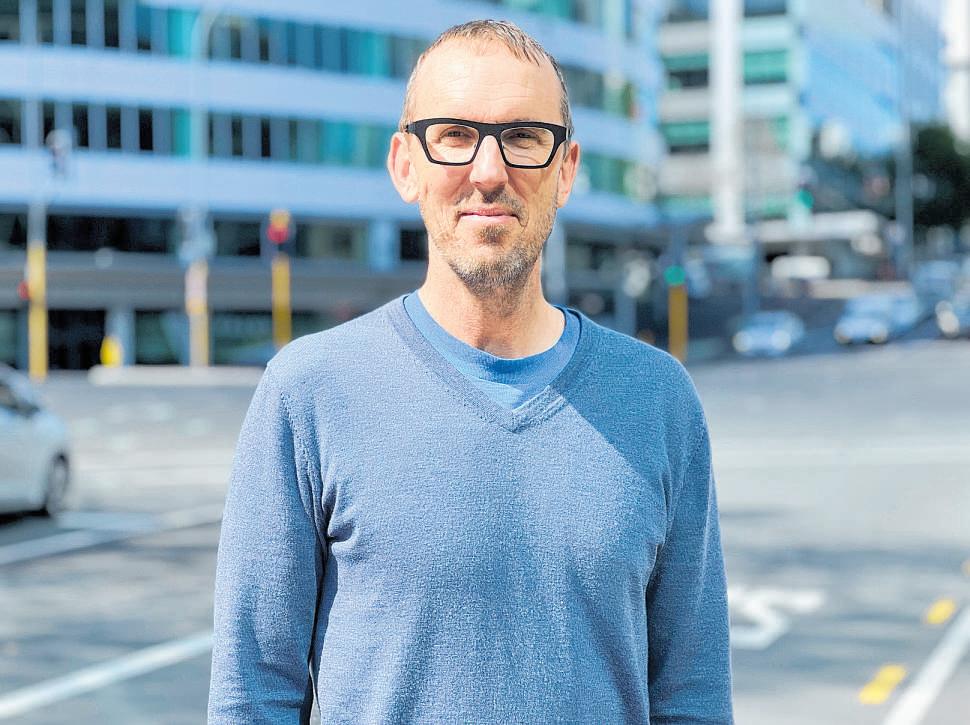
HughessaysNewZealandneeds asignalthatpetrolvehicleswillbe phasedoutby2030withaninterim targetsetin2028.“Weneedcertainty and alineofsightsothemarketcan respond.
“Currently,theplanistohave electricvehiclesmakingup30per centofthecountry’slightfleet(cars andvans)by2035.Contrastthatto NorwaywheretheGovernmenthas mandatedallsalesofcarsandvans by2025willemitzeroemissions. Theyaresignallingpolicychangesfar
AccordingtotheNewZealand GreenhouseGasesInventory,transportmakesup17percentofthe country’scarbonemissions,industrialprocessandproductusecontribute 6percent,electricitygeneration also 6percentandwaste 4percent.
“Weneedtokeepphasingoutcoal boilersintheindustrialsectorand replacethemwithgasfired,andall themethanefromlandfillsisnot beingcaptured,”saysHughes.
Thebigcontributortothecarbon emissionsisagricultureat50percent. “Nodoubt,newtechnologieswillbe developedinthatsector,”hesays. ● TonkinandTaylorisanadvertising sponsoroftheHerald'sInfrastructure report
 MatthewBirchall
MatthewBirchall
NoonelikestospendtheirpreciousSaturday morningwaitingforthetrain.Butthatisexactly whatresidentsofnorthernGermanywere forcedtoendureinearlyOctober,aftercables neededtooperatethetrainswerecut.
Trafficcameto astandstillforthreehours. Unlessyouowned akioskinthestationserving coffee,youwereunlikelytobeimpressed.
Andallittookweretwocables.Thisisjust onesmallstorythatshowswhatcangowrong whencriticalinfrastructureisnotprotected.
InNewZealand,wetalk alotaboutbig-ticket projectssuchascyclewaysandconvention centres.Butwedon’tfocusnearlyenoughon infrastructuresecurity.Infrastructureisnotjust agameofgettingthingsdone.Successmeans gettingprojectsdonewell,andpartofthat meansinvestinginnecessaryprotection.
Whilewearefortunatenottohavebelligerentneighbours,wecan’taffordtotakeour securityforgranted.
ThegoodnewsisthatsomeCabinetministersarestartingtotakenotice.Energyand ResourcesMinisterMeganWoodsrecently announcednewrulesrequiringfuelcompanies tomaintainon-shoresuppliestocoveraround amonth-longdisruptionfromoverseas.Diesel stockwastoppeduptoprotectKiwisinthecase ofanemergency.Itmaynotbe aperfectpolicy. Butitis agoodsolutiontothechallenging problemofpetrolsecurity.
Weshouldn’tbenaiveabouttherisks.
Manyreaderswillrecallthefuelcrisisthat hitAucklandAirportin2017.Damagetothe pipelinethatservesNewZealand’slargestcity threatenedtocutoffthesupplyofpetroland diesel.Theimpactonbusinesswasmassive. Andallbecause apipelineconnectingMarsden PointOilRefinerytoAucklandAirportwas damagedon afarmnearRuakaka.Theendof processingatMarsdenPtinAprilonlyamplifies the importance of resource security.
Earthquakesandseismictremorscompound mattersstillfurther.Wecanensurethatour infrastructuresystemshaveredundanciesbuilt insothatwhenpartsofthesystemcollapse, otherpartscanstilloperate.
NewZealandisfortunatetohaveanample supplyofpowersourcedfromwindfarmsand hydroelectricdams.Butrenewablescanalsobe unreliable.Whenthewindisblowingandthe damsarefull,NewZealandiswell-positioned tomeetdemand.
Theproblemariseswhendemandsurges duringwinterandgenerationfailstokeepup. Whenthathappens,thosestillJulydayssuddenlybegintolosetheirappeal.Anditisin thiscontextthatcoalandgasplayanimportant roleinkeepingthepoweron.The2021 blackoutsacrosstheNorthIslandillustratehow importantgridsecurityis.
TheElectricityAuthorityisinvestigatinghow toensurethesecurityandresilienceofelectricitysupply.Wecanexpectittoadopta balancedapproachtoriskmanagement.
Whilethegovernmenthaspromisedthatall ofNewZealand’selectricitywillbegenerated fromrenewablesby2030,thereis astrong argumenttobemadeforcontinueduseofgas andcoaltoshoreupsupply.
ThegreatestrisktoNewZealand’sinfrastructuresecuritymayoriginateincyberspace. If arogueactorhackedNewZealand’spower
grid,telecomsnetworkorwaterutilities,the countrywouldbethrownintochaos.
Expertsspeakof acascadeeffectwhen criticalinfrastructureisdestabilised.Whenone linkinthechaingoesdown,therestfollow. RememberthosetwocablesinGermany?
Take ahypotheticalcyberattackononeof ourmajorports.It’slessfar-fetchedthanyou mightthink.NavalDome, acyberdefence specialist,calculatesattacksonmaritimetransportincreased400percentin2020. Amalware attackonthePortsofAucklandwouldhave majoreconomicrepercussions,asithandles60 percentofNewZealand’simports.That’s alot ofsupplychaindisruptiontodealwith.
WhatcanNZdotobeefupitsresilience?
Thefirststepistoget aclearsenseofthe problem.NewZealandInfrastructureCommission/TeWaihangadeserveskudosforits excellentclusterofresearchreports. Afocused discussionpaperoninfrastructuresecurity wouldbe awelcomeadditiontothestable.
Thatwouldallowpolicymakerstoidentify whereNewZealand’sprioritieslie.Isourcyber securityuptoscratch?Dowehaveenough redundancybuiltintothesystem?How effectivelydoourpublicandprivatesectors communicate?Doesourenergysystemhave thecapacitytoscaleupwhenneedsmust?
Havingclearanswerstothesequestions wouldhelpNewZealandprotectsomeofits mostvaluableandstrategicallyimportant assets.
Afterall,ifwedon’tensurethatourkitis ingoodnicktoday,thenwewillhavetopay moretomaintainittomorrow.Andwemaywell missourtrain.
Allittakesistwocables.
● DrMatthewBirchallisaresearchfellowatThe NewZealandInitiative.
As asector,wasteandrecyclingoftengetsleft outoftheinfrastructurediscussion,inspiteof thevitalroleitperformsinsociety.
Theworkitinvolvesisoftendifficult, demandinganddirtyandthat’swhymany peoplearehappyforittoremainoutofsight, outofmind.
Thegoodnewsisthatthisisstartingto change.Wasteisincreasinglyfindingitsway ontotheagendaasourcollectivesocialconscienceshiftsmoretosustainableoutcomes. NewZealandisnowturningtoourindustryto supporttheirenvironmentalgoalsandempowerchange.
Withinternationalmarketsforrecyclingmaterialhavingtightenedmassivelyinthelastfew years,there’sgrowingrecognitionthat countrieslikeoursneedtodofarmoreto developonshoresolutionsforourwasteand recycling,ratherthantryingtomakeitsomeone else’sproblem.
Moreimportantly,government,industryand thepublicareallalignedonthefactthatwe needtoliftourgame:NewZealandproduces toomuchwaste.It’satoddswiththeclean, greenimagethatwetakeprideinas anation.
Allofthishastranslatedinto alotmore urgencyonthepolicyfront.TheGovernment hasembarkedonanhistoricre-setofthesector, aimedatradicallyreducingtheamountof wastewegenerate,andincreasingthevolumes werecycle,re-use,andrecover.
Amongthekeyinitiatives,thenationalwaste disposallevyhasbeenexpandedandincreased, andthiswillleadto adramaticboostinthe fundsitgenerateseachyear –from$36million acoupleofyearsagotoananticipated $280m-plusby2024/2025.
Thismakesfor apowerfulwarchesttodrive wasteminimisationandresourcerecoveryprojects,anditisthekeytounlockingthepotential of our sector.
Tounderstandwasteandrecycling,andthe challengeswefaceas asector,there’sonething peopleneedtogettheirheadsaround:itcan costoursectormoretorecycleandtransport wasteitemsthanwegetpaidbytheprocessors thatreceivethemfromus.
Sowhydowedothis?Becauseit’stheright thingtodo;NewZealandmustreduceitscarbon footprint.Ifrecyclingandresourcerecoveryis doneeffectively,itmeansfewerrawmaterials needtobeextractedandemissionscanbe reduced.
Thisfundamentaleconomicconstraintcan onlybeovercomewithstrongcentralandlocal governmentinvolvement,workingwiththe privatesector,and aunitedNZIncapproach. What’sneedednowisinvestmentininfrastructurethattheprivatesectorcannotprovide onitsown,becausethescaleistoogreatand/ ortheeconomicstoochallenging.
Weneedtherightinfrastructureintheright placethatcanenhanceNewZealand’srecycling andrecoveryoptionsforplastic,glass,metal, cardboard,paper,organics,woodandother recyclables,therebyenhancingthevalueof theseitems.
Tobridgethisgap,thetrickfortheGovernmentwillbetoensurethatinvestmentismade in awaythatsupportsviablemarketsand avoidsreplicatingprivate-sectorcommercial activity.
Wasteisincreasingly findingitswayontothe agendaasourcollective socialconscience shifts moretosustainable outcomes.NewZealand isnowturningtoour industrytosupporttheir environmentalgoalsand empowerchange.
NewZealandersarerighttoexpect ahigh degreeofaccountabilityandtransparency aroundhowthispublicmoneyisspent.
Alongsideinfrastructure,governmentinvestmentmustgotowardsmakingiteasierfor householdsandbusinessestorecycle.This meansswiftlyimplementingplansforstandardisedkerbsidecollectionnationwide.Whatgoes intotherecyclingbinmustbethesamewhether you’reinPapamoaorPorirua.Itneedstobe supportedby asustained,publicrecycling educationcampaign,and asimplelabelling systemtocleanupgreenwashing.
Allofthiswillleadtomuchimproved recyclingandrecoveryrates,andmuch improvedworkingconditionsforfront-linestaff inourcollectionandrecyclingfacilities.
Thisisessentialifwearetoattractmore workersintooursectorandstarttoaddress chronicstaffingshortagesinouressentialindustry.
OurmessagetotheGovernmentissimple: wewillworkwithyoutomakethissucceed.
● ChrisAughtonisCEOofEnviroNZ,anda spokespersonfortheWasteManagement IndustryForum,anindustryorganisation representingprivate-sectorcollectorsand recyclersofwaste,andoperatorsofmunicipal landfills.Thegroup’smembersareresponsiblefor around85percentofthewasteandrecycling flowinNewZealand.
INFRASTRUCTURE isoneof aseriesofeightpremier Business Reports publishedannuallyintheNewZealandHerald.
These reports arepremier,business-to-business publicationsprovidingcriticalsector insights alongside robustinformed contentand commentaryaboutissuesthatmatter to NZbusinesses. The reports canvastheviews of CabinetMinisters,business leaders,and business organisationchiefs.
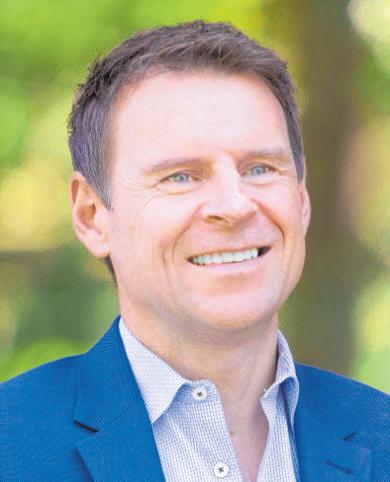
Thissitsalongside expertcommentaryfromrespectedthought-leadersthrough interviews andin-deptharticleswritten by theHeraldBusiness Reports team.
The reports aredistributedwithintheHeraldandthe editorial content is carriedonlineat nzherald.co.nz/business.

Successmeansgetting projectsdone well,and partofthatmeans investinginnecessary protection.
owncarbonemissions.
diversearrayofideologies,someof whichmayclashwiththeirleadershipdecisions.Thatcanleadtodissent,uprisingsorevendeath.Players alsoneedtocreatelawsforthisnew society,whichcanaffecteverything fromwaterconsumptiontorecycling.
Onereasonclimatechangehasn’t been abiggerthemeincity-builders couldbethatthetopicisconsidered too“mundane”forplayersusedto fightingdragonsandzombies,said Dimopoulos.

Anotherstumblingblockisthat climatechange“generallydoesn’t have ahappyending,”headded.
Butthelikeliestreasonisprobably
thatthegamingindustrygenerally steersclearofovertlypolitical messaging.“If agamereliestoomuch oncurrenteventsorsocialproblems,
[video-gameplayers]tendtobecome defensive,like,‘Thisismeanttobe entertainment. Idon’twantpoliticsin mygame,’”saidKwiatkowski.
Lastyear, Battlefield2042’sdesign director,DanielBerlin,saidthe dystopicsettingwasimplemented only“forgameplayreasons.”Dennis Shirk,leaddeveloperforSidMeier’s CivilizationVI:GatheringStorm,which hasplayersreckonwithsealevelrise fromgreenhouse-gasemissions,also deniedanypoliticalmotivations,saying,“Wejustliketohaveourgameplayreflectcurrentscience.”



Recentdata,however,suggests thatmentalitycouldchange.
Arecentreportfoundthatmost videogameplayersintheUSare concernedaboutclimatechange,and believethatthegamingindustryhas aresponsibilitytoactonglobal warming,includingbyreducingits
Floodland islargely aworkof fiction,butoceanographerJohnEnglander, asealevel-riseexpertwhohas supportedthegame —the Floodland teamisdistributinghisbook Moving toHigherGround toschools —believes themediumisuniquelysuitedto raiseawarenessaboutclimate change.


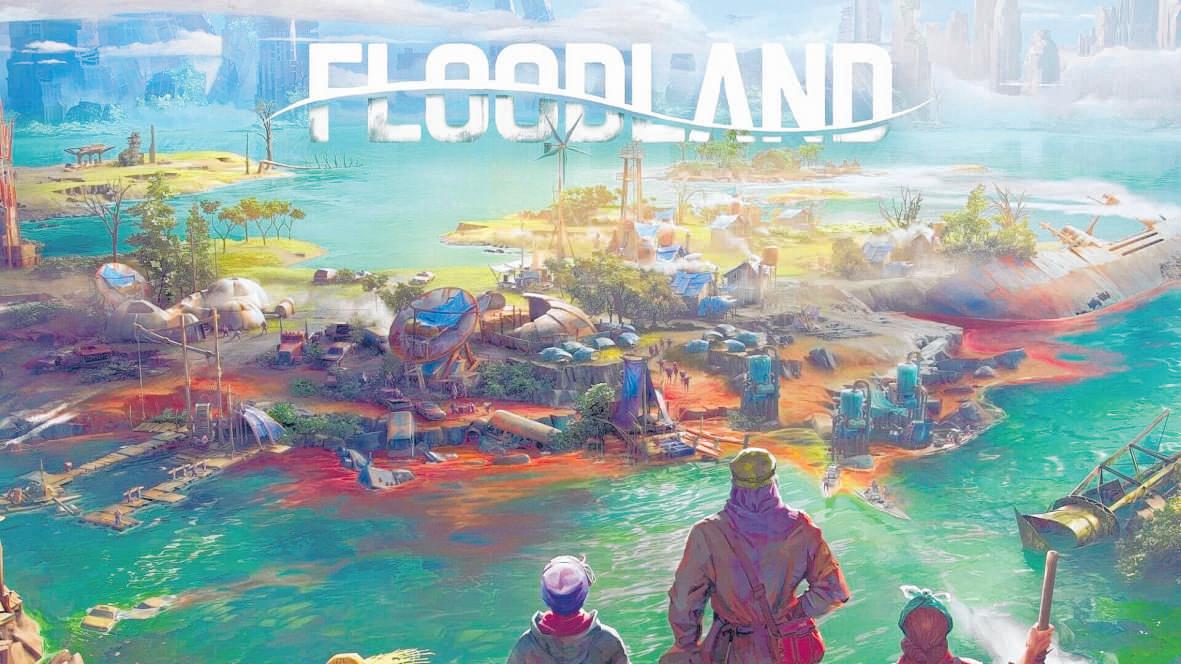


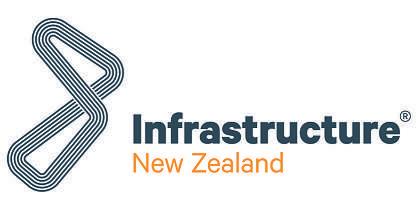



“Videogamescanbe abetter vehicleforeducationbecauseyou’re interactingwithitmore,asopposed towatching amovie,whichismore of apassiveexperience,”saidEnglander.
“Thatmakesthemincrediblypersuasive.”
—Copyright:Bloomberg

In Floodland,anupcomingcitybuildingstrategygame,thebig bossisn’t amonster,sorcerer or roguestate,butsomethingjust asforeboding:climatechange.
Itallstartedwhendevelopers KacperKwiatkowskiandGrzegorz MazurofthePoland-basedindiestudioVileMonarchdecidedthey wantedtocreate apost-apocalyptic city-builderwith arealisticcatastropheasthecatalyst.
Climatechangewasn’toriginally centraltothegame’snarrativewhen KwiatkowskiandMazurpitched video-gamepublisherRavenscourt.It wasjust aminorpointburiedinthe presentationslidedeck.But Ravenscourt’steam“realisedthere was aclimatechangeangle,”said Kwiatkowski,andencouragedthe pairtorunwithit.
Fouryearslater, Floodland hadits releasethismonth.
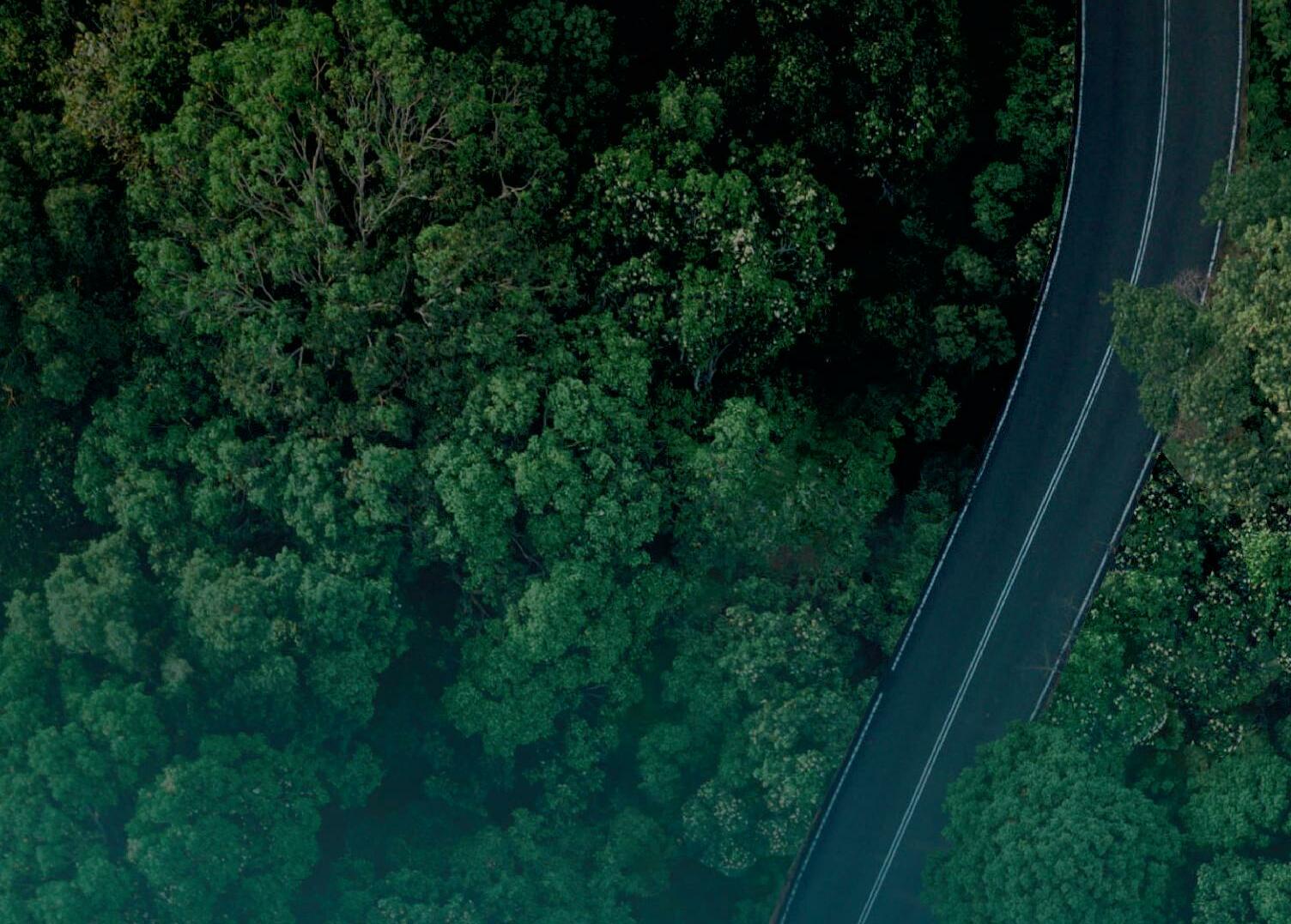

Asitsnameimplies,thegametasks playerswithrebuildingsocietyafter meltingpolaricecapshaveravaged civilisation,reducinglandmassesto war-tornislands. Athicklayeroffog shroudsthewaterloggedlandscape, yetvestigesoftheworld’sindustrial pastremain:half-submergedocean vessels,rustedwatertowersand crumblingskyscrapers.Electricityis amemoryof abygoneera,andall thatremainsarebandsofnomadic survivorsandscantresources.
It’s asurrealart-imitates-lifemomentat atimewhentheworldhas beensweptupby aseriesofdeadly floodsthathavedemolishedhomes, inundatedfarmlandsandwreaked economicdevastation.InPakistan alone,torrentialrainsthissummer killedmorethan1000peopleand drovehalf amillionintoreliefcamps. Officialsestimatethedamageatmore

InFloodland,playersmustrebuildsocietyin aworld drownedbyglobalwarming,writes AllisonNicoleSmith
quencesofmassindustrialisation.
Floodland isn’tthefirsttoenvision adystopianplanetinundatedbysea levelrise.Thepremiseofrisingtides canbefoundinadventure-action gameslike Highwater, Submerged and thecriticallyderided Waterworld (basedonthe1995KevinCostnerflop ofthesamename.)Meanwhile, Endling and Frostpunk spotlightother environmentaldangerssuchaswildlifeextinctionandcoalconsumption.

Butexplicitdepictionsofsea-level risearestillfewandfarbetween amongcity-builders —surprising, giventhatsomuchofthegenreis aboutconstructingandmanaging infrastructurethatinvariablypollutes thenaturalworld,whileatthesame timeexploitingresourcesfromit.
Torealisticallyintegrateclimate changeintocity-buildersims,the environmentneedstobemorethan just abackdrop,saysKonstantinos Dimopoulos,agamedesignerwitha doctorateinurbanplanning.Asan example,hesuggests“punishing playersforover-relyingoncoaland oilwithfloodingthatdrownsyour characters.”Incontrast,playerscould berewardedforimplementinggreen technologiesoradoptingsustainable practices.
Floodland isn’tthatgame,butit’s lessnaivethanothersthathavecome before —withouteschewinghope.
thanUS$10billion,andthecountry faces afoodcrisisas aresult.
“There’sveryfewgamesbasedon climatechange,” saidKwiatkowski. “It’s arealissue.”
Butvideogamesareincreasingly dealingwithclimatechangethemes, thoughwithvaryingdegreesofaccur-


acyandeffectiveness.Onthemore realisticendofthespectrum,the2011 strategygame FateoftheWorld has playersbalancethethreatofglobal warmingwithfree-marketeconomics suchascap-and-tradepolicies.In contrast, Battlefield2042 —setin anotso-distantfutureravagedbyclimate

change —playershurltheircharactersfromhelicoptersintotornados thattransportthemacrosstheland.
The2020factorysimulationgame Factorio punishesplayersfortheir pollution-causingconstructionswith alienattacks —a moremeaningful,if outlandish,portrayaloftheconse-
Liketheissueofclimatechange itself, Floodland forcesplayerstodeal withtrade-offsthatexistinreal-world decision-making.Forexample,as playersforageforresources,suchas remnantsofold-worldtechnologies, theyencounterothersurvivors. Playersnotonlyneedtomanagethe populationinfluxbutalsoappeasea